#it's very babylon inspired
Explore tagged Tumblr posts
Text

POSTER!! poster man yeah it's a poster it's a poster hey guys i made a poster OKAY WE GET IT!!!
I was looking through my wips and saw this one just kind of rotting in there, I was going to do lineart but then i remembered when I tried to line this it looked awful
SO WHEN IN DOUBT DO LINELESS ART MEN
ANYWAYS TEEHEE i may be cringe but i am free which is why I'm writing an entire prequel story about how Manglewood Swamp became Manglewood Swamp
anyways check out the thumbnail for this bad boy it's CRAZY

#it's very babylon inspired#including the hair-pulling stress of recording with sound equipment#littlebigplanet#little big planet#lbp#littlebigplanet 3#little big planet 3#lbp 3#marlon random#lbp marlon random#lbp fanart#lbp oc#rudi valens#pyro plays with pencils
63 notes
·
View notes
Text
entrance to Belurat vs. the Ziggurat of Ur


#bel-URAT… zigg-URAT… hmmmm#belurat is very inspired by ancient mesopotamia (esp. babylon) so i dont think this is a coincidence#im doing research will prob make a post about it sometime soon
69 notes
·
View notes
Text
Londo: Great Maker! What did you put in this thrice-blessed dessert?
Garibaldi: chocolate. it’s a *chocolate* ganache, that’s how they work.
Londo: BRILLIANT!
#who are queue? what do queue want?#incorrect babylon 5 quote#londo mollari#michael garibaldi#tw capslock#this was inspired by a conversation I had with my mother#as (almost) always— I was the Londo of the conversation#and very jet-lagged; in my defense
9 notes
·
View notes
Text
Valyrian Pantheon Headcanons
We know the names of 5 of the Valyrian gods and that's it. We don't know anything about the practices or even what those gods were patrons of. Here is my headcanon reconstruction of the pantheon ^_^
I think the Fourteen Flames (the volcanoes) are named for fourteen gods who constitute the main pantheon, similar to the 12 Greek Olympians or the 12 Roman Dei Consentes. There are many minor gods, usually personifications of concepts like seasons/emotions.
I imagine them like Egyptian gods, who are personified sometimes as humans, sometimes as animals, sometimes as animal-headed humanoids. I imagine the main fourteen as dragons, though idk how silly that would look lol.
I think they were also androgynous gods. Why? That's fun. That's so fun. Dragons are theorised to be hermaphroditic/intersex who can change their sex at will, but also are referred to as she-dragons if they are confirmed to lay clutches of eggs. So some of these gods are gods, and some are goddesses, despite being a-gender
Canonical Gods
BALERION: I believe Balerion's name is at least a little inspired by Ba'al, an ancient Semitic god who was very important to the religions of the region (Canaan, Babylon, etc) and features as a false god in the Hebrew bible. I think he's the King of the gods, like Zeus. God of war or fire or conquest or all of the above. Many ancient gods shifted their patronage and powers.
VHAGAR: Consort of Balerion, similar to Hera. Goddess of war/wisdom, similar to Athena. I think this fits a person like Visenya.
MERAXES: Perhaps a concubine of Balerion? Like how Zeus had thousands of lovers. Metis, Leto, Demeter, etcetera. Goddess of love, because Rhaenys seems like a woman who enjoyed love and life. Perhaps also a goddess of marriage?
SYRAX: It's gotta be someone Rhaenyra would think is cool. Perhaps a goddess of the sun/moon? Another war goddess? A queen? Actually, perhaps Syrax is the Hera of the pantheon, while Vhagar is not necessarily virginal like Athena but 'unmarried' so to speak. Goddess of beauty/wealth would also fit Rhaenyra. Goddess of the sun or moon would be fun in opposition to Sunfyre.
BOASH: called 'The Blind God' Mentioned as the god the Lorathi worship, whose religious followers (dissidents of the Valyrian Freehold) founded the city of Lorath. The name doesn't follow the typical Valyrian naming traditions, perhaps he was originally Boax/Boaxes? Would be fun. He's a very esoteric god connected to 'higher truths', the priests are eunuchs and the followers are vegetarian teetotalers and a main tenant is that everyone is equal. They also wear hair shirts which is an old Christian practice. I think he's a version of a Valyrian death god
the BLACK GOAT: Whose followers founded Qohor. I think he's a minor god, perhaps of magic or agriculture even, agricultural deities tend to be very important to common folk. However the goat imagery evokes Satan and Baphomet, so I think a villainous or death deity would be fun.
Non-canonical gods
A lot of the Targ dragons are given names with similar naming style to the canonical god dragons.
VERMITHOR & VERMAX: The naming conventions of Vermax and Vermithor intrigue me... I think one is the name of the God and one is a theophoric name in reference to the god. Perhaps a god of justice, law, order, etc, since they were the dragons of Jaehaerys and Jacaerys and I can see them picking that kind of God.
ARRAX: Lucerys names his dragon this, so I think a coming-of-age god or god of youths would be fun since he, yknow, got eated at 14.
CARAXES: This is Daemon's dragon so I'm saying Caraxes is the Dionysus/Hermes trickster god. Daemon picking the bacchanalian drunk sex god for his dragon is real to me.
MELEYS: Rhaenys TQWNW's dragon. Rhaenys gives off SUCH demeter vibes idk so agricultural god would be fun but idk i don't think she'd pick something like that. Perhaps its based off of Meraxes since Rhaenys is her namesake. Perhaps an oceanic or weather-based god.
MORGHUL: Morghul is simply the word for death in High Valyrian e.g. 'Valar Morghulis', but I like it as a euphemistic name for a God of death. Like his name is so tabboo that you just refer to him as death, or he's just named death in relation to afterlife, like how Hades refers to both the god and the underworld. I think perhaps Boash and the Black Goat are actually interpretations/aspects of the same deity, perhaps a death - morghul - god.
SHRYKOS: Sick name sorry just had to say that. He's Jaehaerys (son of Helaegon)'s dragon. got no clue what he could be a god of cos jaehaerys is a plot device character. I think he's just a cool Valyrian word, like Morghul, since Jaehaerys and Jaehaera are twins. Be fun if they picked life/death dichotomy for their dragons :p
TERRAX: ridden by the pre-doom character Jaenara Belaerys, who flew further south in Sothoryos than anyone else. God(dess) of travel/wisdom/conquest/oceans would be fun since she's a traveller who flew across oceans and sort of exemplifies the Valyrian conquest/adventurer spirit.
TESSARION: Okay the blue queen has to be a goddess of the ocean or the sky<3
TYRAXES: Joffrey's dragon :) I think a god of animals would be cute also cos he sounds like T-rex. I would name my dragon T-rex. Possibly a bastardisation of Terrax though...
URRAX: This is the name of a legendary/fairytale dragon from the story of Serwyn and Daeryssa from the Age of Heroes. By Daeryssa's naming convention and the fact she is mentioned only in AGOT, I think she was perhaps supposed to be a Targaryen before GRRM had established a full history. I think he's just a bastardisation of perhaps a Valyrian god like Arrax.
So my vision of the Valyrian pantheon includes Balerion, Vhagar, Meraxes, Syrax, Vermithor, Arrax, Caraxes, Terrax, Tessarion, which is 9 gods
plus Meleys and Tyraxes who I'm not sure if I want to be referring to above gods or just the name of a god entirely, which makes 11
Adding a death god (Boash, Black Goat, Moghul) makes 12,
which leaves another two unnamed for my personal idea of a Valyrian pantheon :)
195 notes
·
View notes
Text
highkey fascinated thinking about how we can insert nations into world history and imagine their interactions with those humans who profoundly changed history. like, yao's relationship with the first emperor 🤔 in the past, i used to conceptualise it as a dynamic defined by jealousy; because of the well-known story of how qin shi huang di desired immortality and searched for the elixir of eternal life. yao therefore would be the literal inspiration and instigation for that desire; an emperor desiring to preside over the glory of his empire without end. about which yao would be scornful, seeing it as foolish and hubristic from the eons-old immortal nation vs. human divide, especially from the pov of how we're raised with stories of qin shi huang being a tyrant figure.
but now...i think maybe they're distinctly more of kindred spirits. i think yao back then especially understood that hunger for immortality well: the all-consuming obsession of an emperor—and so, an empire—with how not to end, how not to die, how to prolong his era. because nation immortality isn't exactly a given, especially not two thousand years ago. yes, humans are mayflies next to nations—but wars of annihilation and the likes of carthago delenda est were commonplace. carthage, rome, babylon, akkad all fell didn't they? so, not so much petty jealousy between him and the first emperor but more i understand you the most don't i? i will make you great and without end, through the sword but also bureaucracy and standardisation, and your enemies' children's children will know your name long after their forefathers are dust. yao is somebody whom i think is a chameleon figure with many layers; before security in his power allowed him to cultivate this image as this scholarly, refined wellspring of civilisation to korea, japan and many others, who is as eternal as the sun rising in the east—i think he was very much the opportunistic, ambitious and paranoid warlord the first emperor was: scrambling, fighting and nakedly scheming his way to power, with no promise or confidence in his immortality.
#hetalia#hws china#wang yao#kind of a stream of consciousness and unpolished but Hmmmmm#hetalia headcanons
162 notes
·
View notes
Text
Among Us: Obey Me Edition
Lesson 43 gave us some new worldbuilding mixed into the usual shenanigans. We learned some interesting stuff, so let's get into it!
(spoilers for NB Lesson 43 below the cut)
At the end of Lesson 42, we're taken by surprise when Asmodeus makes his wish for winning the Information Sciences part of the RAD Science Fair. He wants to have the brothers visit the Celestial Realm -- a wish that does get acknowledged as crazy, which even Asmo himself didn't necessarily expect to be possible.
And, well...it's not. Actually visiting the Celestial Realm is speculated as still being beyond Diavolo's ability to arrange, or else he would have just done that. The compromise they get instead, we learn, is that they will be allowed to go visit Babel, a place that isn't quite the Celestial Realm - it's actually located in the human realm. But it is, as Belphegor describes, "as close as you can get to the Celestial Realm" without actually going there.

Babel itself is obviously inspired by the story of the Tower of Babel. For those not familiar, this is an origin myth/parable from the Book of Genesis. TL;DR: The people of Babylon/Babel were constructing a tower that would reach the heavens. This makes God angry at their hubris, and thus he divides them by splintering their language, making it so they cannot understand each other and therefore cannot cooperate anymore -- and this is the explanation for why we have different languages/cultures today.
Babel is a very secret place, which only seraphs and the Devildom royal family are supposed to know about. Plus, to enter Babel, you have to use magic to find the entrance in the human world, and that entrance is always moving locations, so not even they quite know where it'll be at any given time -- though Solomon apparently somehow knows both about its existence and also where to find it, because of course he does. As they mention later, it really is not a place that often gets visitors! But luckily for our cast, it just so happens that the entrance will be showing up near Serenity Manor the very night they go to the human world!! Isn't that convenient?


Now, the mythological origins of Babel itself, as a name, can be traced to both the Hebrew and Akkadian names of Bablyon -- in Hebrew, it means "to confuse/to confound", and the Akkadian name Bāb-ilim translates to "gate of God".
Which brings us to the Gate of Babylon and the Test.

After Solomon dips, the brothers and MC fall through an abyss and are brought before the Gate of Babylon. Lucifer mentioned that Babel is a place that "all are free to enter, but none may enter freely". One has to pass some sort of judgment to be granted access to Babel, otherwise they could face various punishments, ranging from being drowned in Cocytus (again) to being erased from Earth. (We're not sure if that means just from the human world or...well, existence? Canonically, the astronomy of the human realm has different constellations than the Devildom...but we're not sure the writers were thinking that far about it.)
And how are the brothers and MC to be tested? Why, by none other than Raphael, who was dispatched specially to judge their entry on this day. He gives them a question/riddle they have to answer within 30 minutes -- there is an imposter in their midst, who is it?
After some back and forth, the brothers soon start panicking and lashing out at each other, accusing Belphegor of being an imposter. MC can help be a voice of reason (along with Lucifer and Beelzebub), and they come to the conclusion that the answer might be that there is no imposter.
And that's true between MC and the brothers -- but Lucifer (and potentially MC, depending on your choice) realizes that actually, there is an imposter. It's just not one of their group.
It's Raphael -- or, should we say, Michael.



This isn't the first time we've seen Michael pretending to be Raphael -- it was a twist that was shown at the very end of Nightbringer Season 1.
Michael, still impersonating Raphael, quickly runs off, letting them know that judgment has passed and they are free to enter Babel. Lucifer adds that the test was not only about getting the right answer, but also that it proves their faith in each other, which is about the kind of Celestial Realm trickery we expect at this point, and then the family proceeds to enter.

Interesting to note is that both Lucifer and Michael mentioned that even seraphs know very little of Babel, which means none of the cast, as far as we are aware, have ever been inside. This begs the question of what exactly is in Babel, along with its purpose.
Hopefully we'll find out in the next lesson!
#so interesting the things they are focusing on in NB tbh#obey me nightbringer spoilers#obey me nightbringer#obey me nb#omnb#obey me#obey me!#obey me swd#obey me shall we date#omswd#obey me nb lesson 43#obey me worldbuilding#obey me analysis#sorry for the title we were trying to be spoiler free lol
57 notes
·
View notes
Text
Made Marion Development Update, August 2024

Official Will Route Release Window
I've checked in with the team and we aren't quite ready to release Will's route in (what remains of) the summer, but we're far enough that I have team buy-in on an official release window of the first half of October.
I'll have a more specific date once we begin our beta test in September, which usually lasts two weeks. I may release the first three chapters early for testers while I finish coding the chapters 4.
Will Chapter 3 will be fully written within a week from now. It turned out to be quite a beast. That means that Will's chapter 4s may be a bit shorter each than Robin's were, however, they will also be more different from each other than Robin's were. In fact, the love scenes and the climactic Chapter 4 action scenes are in completely different locations.

I'm going half-tilt on coding while I finish the script, and should have Chapter 1 fully coded soon, as well.
World Name Thoughts
Although the world in which Made Marion is set has three named countries: Avalon, Sunjata, and Nibiru, the world as a whole does not yet have a name.
I probably won't give it an in-universe name because its inhabitants primarily identify with their country of birth and don't really have a view of themselves as being on a planet in a system full of other planets. But still, since I'm planning to create multiple tales in this world (one for each country), I could use a name to call it for marketing purposes.
I've been putting this off for a while, but I'd like something with a historical/folkloric connection that deals with the number three OR that has something to say about the kingdom's themes - Sunjata, the Sun Lands; Avalon, the Middle Kingdom (light and shadow); and Nibiru, the Twilight Realm.
Right now I'm thinking perhaps "Triskelion," named after the Celtic triple spiral pattern. But I'm not 100% satisfied with that since I have two other countries that do not have Celtic inspiration (Sunjata is inspired by Medieval North and West Africa, while Nibiru is very loosely inspired by Ancient Babylon and the Indus Valley Civilization). It's probably not a big deal since it'd be difficult to encompass all three and this entire world began with my desire to thread Celtic elements into the Robin Hood tales, but still. Any thoughts or ideas?
Here's a reward for everyone who made it to the end. Arrapso didn't make those shirtless combat sprites for nothing!
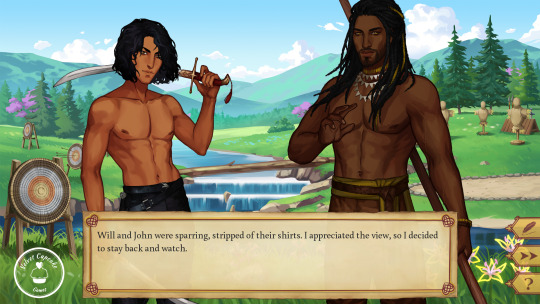
42 notes
·
View notes
Note
Do you have any sonic ocs? (Or ocs in general, haha) (totally not asking so I can make fanart, nahhhh….)
The fact that you are considering drawing my OCS when you haven't even seen them yet is very flattering,thank you!!
these are from when i was in highschool lol
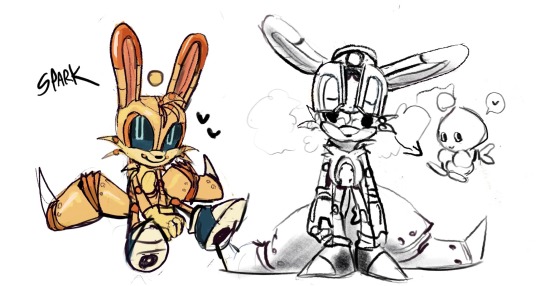
This is Spark, They are a Tetraplegic Chao Cream found and brought to Tails,who successfully managed to build a fully functional mechanical body for them to play with. This robot body is connected to their brain and can even fly.
Spark lives at Tail's workshop and they’re clearly very fond of Cream -who regularly visits them to play- and Tails.
Originally,Tails was going to design Spark’s robot body based on his own (for trademark reasons) but since Cream was Spark's “owner” (for lack of a better term referring to someone who takes care of a chao) ,she wanted to participate in the designing part and gave him a few crayon drawings of rabbits, which were so cute that Tails simply had to include them in the final design. This is why they look like a Fox/Rabbit hybrid. (it also makes sense since Spark sees them both as some sort of older siblings)
ofc Spark isn't always inside their robot body,Tails takes them in and out everyday.

Aaand these are some apprentices I designed for the Babylon Rogues! Tundra,Velvet and Ember. They love snowboarding and are developing their skills at Extreme Gear Racing. They kinda need some redesigning...
These three are orphans. They used to live at an orphanage situated in a small town near Snow Valley. Unsatisfied with their lives there (and that nobody seemed to be interested in adopting them) they ran away around the age of 12 to try and start new lifes on their own,resorting to thievery and trickery to get by. Life was hard and unfair for three kids growing up in the snowy streets,but thanks to Velvet's determination,Ember's charisma and Tundra's intelligence they managed to survive. After a year of wandering,they stole 3 snowboards and started practicing the sport ,with the hopes that one day they would become famous professionals who didn't need to resort to stealing. However,by they age of 16, they hadn't just developed great skill and love for what they now consider "the art of thievery" - and a liking for equipment and luxuries most can't afford- but they also had lost all interest on the "safer" version of snowboarding and became addicted to the speed and the danger of racing.
They set on a journey to find their childhood idols: The babylon Rogues, a group of legendary thieves that they heard tales about back at the orphanage's storytime and who's Extreme Gear skills were what originally inspired them to try snowboarding. They traveled far and wide searching for them and once they managed to find Wave,Jet and Storm,they begged them to teach them their ways . After annoying them enough (and practically not letting them alone lol) the trio of professionals finally agreed to train them.
VELVET THE NORTHERN CARDINAL:
Energic,Peppy,Sassy,Optimistic,laid-back and confident. A speed junkie and a little bit of a clown. The fastest of the trio. Jet is his Idol and he'll do anything to impress him. Tries to annoy Sonic to imitate his teacher,but he actually thinks he is the coolest guy around after Jet. He has a big heart and doesn't seem to hate Sonic -or anyone -at all,but he does enjoy some friendly banter at the moment of competing. Jet likes him a lot and is kinda proud of him but he tries not to show it ,as he doesn't want the kid (or himself) to get attached or to think he'll actually pass to him his "Master of the wind" title someday.
The gem-shaped-computer on his neck was a gift he received from Wave after she updated her own and didn't know what to do with her old one. According to her,she handed it down to him cause "it matched his feathers". Now,feeling honored by one of his idols,he wears it with pride.
EMBER THE COCKATIEL:
Cheeky, Rebellious, Brave, Impulsive and Loyal. Doing tricks in the air like its nothing is her specialty. Cares a lot about her looks and is an expert at the art of deception. She is also can be a little bit of meanie. She and Wave share a sister-like kind of relationship. Since they both have strong personalities, they fight a lot and she tends to disobey her,espeally when it comes to the times she tries to teach her about mechanics and "the boring part" of Extreme Gear personalization. However, they always make up and end up gossiping at the end of the day.
TUNDRA THE CRESTED PENGUIN :
Silent, cold, shy, serious, a bit competitive and incredibly smart. Expert at strategizing and finding shortcuts while racing. Has high expectations of himself and doesn't handle failure very well. Being the oldest by a year,he is very protective of his adoptive siblings. Unlike Wave and Jet,Storm didn't have to be convinced to take him under his wing cause he liked the kid since the moment he showed up. tho he is trying to teach him to live a little and be a bit more impulsive at the moment of racing.
#rat answers#my sonic ocs#Spark#Ember the cockatiel#Tundra the crested penguin#Velvet the northern cardinal
481 notes
·
View notes
Text
Jumping in the Deep End 🐇🕳️💛
So there’s sth else I noticed related to the Gracie rabbit hole I’ve fallen down that I haven’t mentioned yet bc I feel crazy saying it but I’ve already said a lot of insane stuff lately so fuck it. But before u read this post I do recommend reading this other analysis I wrote as well as this post first bc it’ll make everything make more sense. Ok continuing….
youtube
Not long after The Secret of Us was released on June 21, I watched this interview that was uploaded the day the album was released where Gracie texts her fans. One of the first things I noticed was how Gracie suspiciously looks straight at the camera as she makes a typo which I mentioned in the analysis I just linked, but another thing that caught my attention was that one of the fans is named Aimee (3:06 mark in the vid). I thought this was a little strange bc Aimee isn’t really the typical spelling of that name, it’s usually spelled like this instead, Amy. But even more strange was that the day after this interview was uploaded, June 22, Taylor just so happened to play thanK you aIMee as one of the surprise songs in London. What an interesting coincidence!
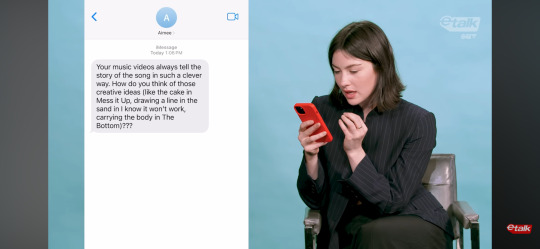


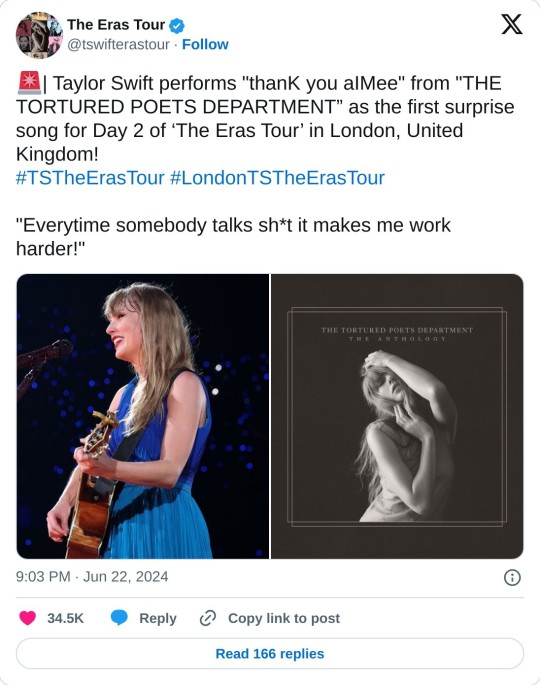
June 22 was a big deal bc it was Midsummer Day which celebrates daylight. This is likely why Gracie made yellow 💛 the main color of the album and chose to release it on June 21, Midsummer Eve—bc this album is abt a coming out journey (see these posts for more on that: x, x, x, x, x, x, x). And if you look at the text “Aimee” sends, it sounds like sth an artist would ask another artist rather than a typical fan question. Aimee specifically asks abt her creative process which is a very artist thing to do. So basically all that to say I wouldn’t be surprised if Aimee was actually Taylor and this text was also an easter egg for us to find just like the intentional glitches and typos.
If this text was in fact from Taylor, I believe the purpose of it may have been to lead us down the Gracie rabbit hole where we could find endless cross references between Gracie’s music and Taylor’s music. If you watch the music videos for those 3 songs Aimee mentions and listen to the lyrics, they could easily be interpreted as being abt Taylor’s secret relationship w this korner of the internet that is almost like the Hanging Gardens of Babylon bc there’s no tangible proof it ever existed but there is a lot of folklore surrounding it and the story has been passed down and become a myth. “Wonder if you regret the secret of us.” I believe these 3 songs could be from Taylor’s perspective. And to go even further w it (fair warning, this is where we really go off the deep end), I think it’s very possible that not just these songs are abt this secret relationship, but most of Gracie’s songs bc all of them reference each other and have lyrical and visual parallels to each other much like Taylor’s songs (see this post).
Now I want to make it very clear: Gracie is her own person w her own talents outside of Taylor. I don’t want anyone to get the wrong idea or think I’m trying to undermine Gracie’s artistry or give all the credit to Taylor. And I also don’t think this secret relationship was the only inspiration for these songs since it’s very clear Gracie uses her own personal experiences and feelings, and I believe she could be writing abt more than one muse or from more than one person’s perspective in each song, similar to how in hoax Taylor sings abt 3 different relationships simultaneously. I am simply trying to point out the insane amount of parallels between Gracie and Taylor’s music that I think are too abundant to simply chalk up to coincidence. And I’m not saying that my interpretations are for sure the right ones, I could definitely be wrong. It wouldn’t be the first time. This is just a fun clown theory that I think is worth considering.
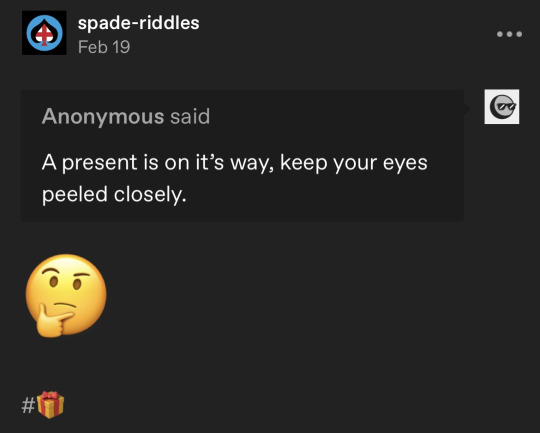
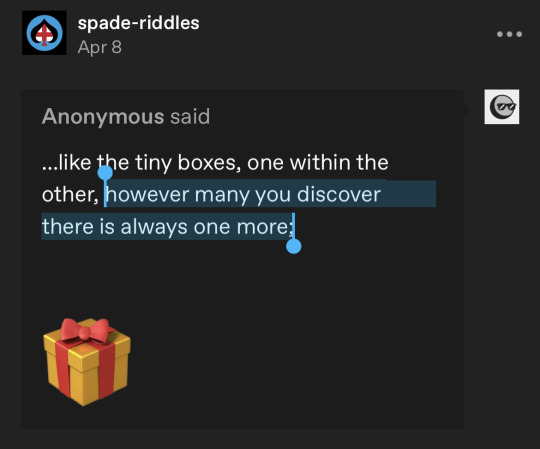
So going back to those 3 songs in the text—Mess It Up, I know it won’t work, The Bottom—I wanted to do an analysis on them and the mvs bc I think the reason why “Aimee” might’ve been pointing us to those specific songs and mvs is bc they are an important part of this coming out story. Plus the specific symbolism and imagery used in the songs can be cross referenced w pretty much every other song in Gracie’s discography (and w many Taylor songs) making them all connected.
For instance, the main themes in Mess It Up are:
Not growing up -> minor, tehe, Wishful Thinking, Older, Better, Augusta, Alright, Difficult // Peter, The Archer, cardigan, betty, peace
Groundhog Day (This is related to the next theme) -> Under/Over, Risk mv, I Love You, I’m Sorry, us // The Prophecy
Making the same mistake over and over/Bad habits -> Long Sleeves, Rockland, The Bottom, Best, Will you cry?, Difficult, This is what the drugs are for, Fault line, Block me out, Blowing Smoke, I Love You, I’m Sorry, us, Let It Happen // Anti-Hero, coney island, Florida!!!, Fresh Out The Slammer, The Black Dog
Not being able to sleep at night -> Rockland, Hard to Sleep, Camden, Painkillers, Difficult, This is what the drugs are for, The blue, 405, Risk, Blowing Smoke, Let It Happen, Tough Love // Midnights the stories of 13 sleepless nights, hoax
The birthday cakes -> 21, Stay mv, Mean It mv, Risk mv // All Too Well short film, coney island
“Let it happen” -> The song Let It Happen on TSOU, Better
Lying -> For Real This Time, Best, Full machine, Where do we go now?, Block me out, Blowing Smoke, Let It Happen // Getaway Car, illicit affairs, the lavender haze/bearding/red herrings
Phone calls -> 21, Rockland, Full machine, I should hate you, This is what the drugs are for, The blue, Block me out, us, Let It Happen // cowboy like me, Anti-Hero mv, Fortnight mv
Going onto a porch in order to apologize to someone -> Risk mv (technically not to apologize but it’s still related to coming out and making things right) // betty, cardigan, this is me trying, long story short, Fresh Out the Slammer
The main themes in I know it won’t work are:
Closets -> Peter, seven, cowboy like me, I Know Places
Drawing the line in the sand and putting up boundaries or crossing boundaries -> Mess It Up, Long Sleeves, For Real This Time, Best, Felt Good About You, Let It Happen, Gave You I Gave You I
Cutting ties w someone -> Friend, Blowing Smoke, Free Now
Being someone’s ghost/haunting someone -> I miss you, I’m sorry, us, Block me out // Basically all of TTPD and much of folkmore and Midnights (Anti-Hero mv)
The main themes in The Bottom are:
“I told you I was down bad, you hate to see me like that” -> Down Bad
Making the same mistake over and over/Bad habits -> Long Sleeves, Rockland, The Bottom, Best, Will you cry?, Difficult, This is what the drugs are for, Fault line, Block me out, Blowing Smoke, I Love You, I’m Sorry, us, Let It Happen // Anti-Hero, coney island, Florida!!!, Fresh Out The Slammer, The Black Dog
Opening up the door and letting someone into your house, closing the door, or going into someone’s house uninvited -> Mess It Up mv, Under/Over, tehe, I should hate you, us, Let It Happen, I Love You, I’m Sorry, Gave You I Gave You I // cardigan, hoax, Anti-Hero mv
Dragging someone down/Hitting rock bottom/Coming down after a high or being high (drug metaphor; becoming more famous=“getting higher”) -> Long Sleeves, Rockland, Wishful Thinking, Painkillers, Alright, This is what the drugs are for, Fault line, Right now, Block me out, Blowing Smoke, I Knew It, I Know You, Gave You I Gave You I, Free Now // Many songs on TTPD use the drug metaphor, gold rush, long story short, Anti-Hero mv (pushed from balcony), seven, this is me trying, illicit affairs
Being the problem -> 21, minor, Rockland, Wishful Thinking, Older, Painkillers, Best, Difficult, Block me out, Unsteady, I Love You, I’m Sorry mv // Anti-Hero
Mess It Up
youtube
So as I stated before this song is all abt making the same mistakes over and over and reliving the same day like it’s Groundhog Day. Gracie, the narrator, keeps trying to make things right and apologize to the person she’s hurt, but every time she tries she messes it up which is represented by her dropping the cake repeatedly. But finally at the end of the mv, she is able to get it right and properly apologize. She knocks on someone’s door and they open it which symbolizes this person opening their heart to Gracie and forgiving her. If you go to the 2:12 mark in the mv when the letters and numbers on the fridge fall, you’ll see that they spell out a secret message “Hi (13, 31) Peter Pan - T” (the “I” doubles as a 1, the “3” doubles as an E, and the “L” doubles as an R/r if flipped on its side). Taylor was 31 yrs old when the Mess It Up mv was released on May 6, 2021. Peter Pan is the boy who never grew up. This means that it’s likely the narrator’s inability to grow up that is causing issues in the relationship. This is why the song starts w “Opened two double doors, typical, pretty sure I could grow up.”
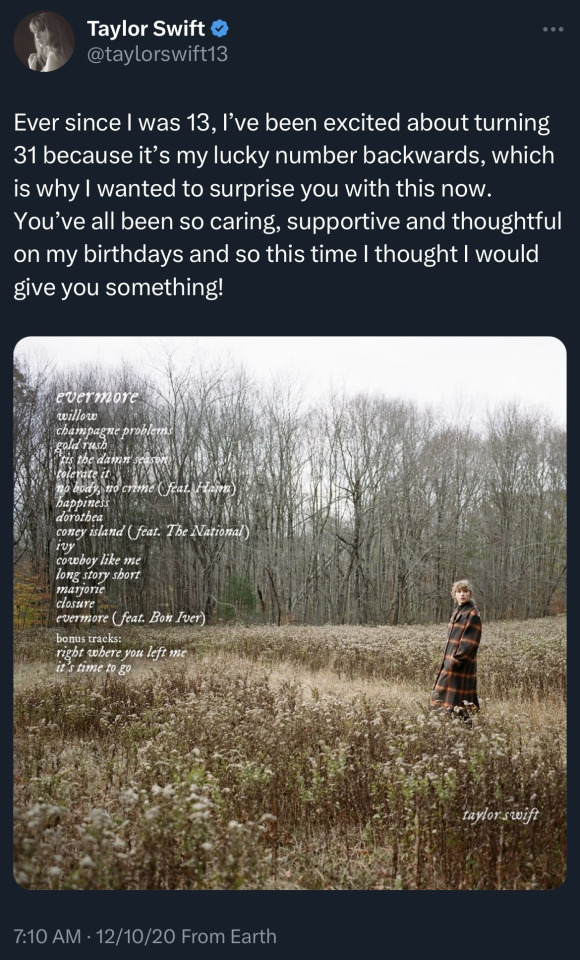

“Did I fall out of like when I called you” -> Did I cross a boundary and make things worse when I called you? Boundaries are one of the main themes in I know it won’t work. I believe that Gracie and Taylor could be using “phone calls/texts/letters” as a metaphor for the anon messages and riddles we’ve received over the years. As a result of trying to solve these messages and riddles, kaylors have gotten a ton of hate and many have had to leave the fandom bc the environment is so toxic. This song could be Taylor acknowledging these issues and apologizing for how we’ve been treated.
“'Cause every time I get too close, I just go mess it up” -> It’s possible Taylor has tried many times over the years to properly apologize to us by giving us more cryptic messages containing these apologies, but the problem is that these anon messages and riddles are the main reason why we get bullied so this only makes the issue worse in the end.
“Funny that (Funny that) didn't work (Didn't work), I could be anywhere, I'm on your block” -> I believe this could be related to I Love You, I’m Sorry. “The way life goes, Joyriding down our road, Lay on the horn to prove that it haunts me, (I'm wrong again, wrong again) I love you, I'm sorry.” This song also has the lyrics “I wanna speak in code” which makes me think of the anon messages and queer flagging.
“I keep thinking, maybe if you let me back in, we can make it better, breaking every habit” -> Taylor talks abt breaking bad habits in The Black Dog which I believe represents putting an end to the bearding/lavender haze/red herrings/smokescreen/blowing smoke/not growing up.
It’s very interesting that Gracie uses a birthday cake to apologize. Birthday cakes are a common symbol that shows up in Gracie’s music. They also appear in 21, another apology song, and the Risk mv which is likely abt the mass coming out (see this post). In the All Too Well mv, Sadie’s character receives a birthday cake at the same time that Taylor sings, “But then he watched me watch the front door all night, willin' you to come, And he said, ‘It's supposed to be fun turning 21.’” In both 21 and ATW 10 min version, the older person in the relationship misses their significant other’s 21st birthday which greatly hurts them. These songs could be 2 sides of the same coin from opposite perspectives like dorothea and TTDS. With how many connections there are between Gracie and Taylor’s music, I’m inclined to believe this isn’t a coincidence.

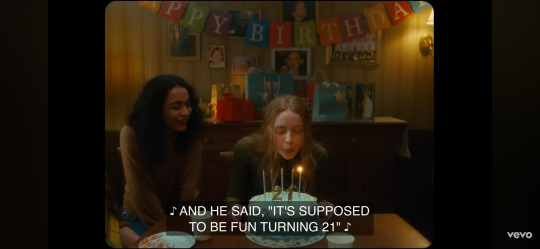
(From the Mean It mv. When the 21 candles are thrown in the box they almost look like a backward "t" and "s")


“If it doesn't go away by the time I turn 30, I made a mistake and I'll tell you I'm sorry, ‘Sorry.’” The narrator is saying once she turns 30 she’ll apologize to the 21 yr old if her feelings haven’t changed by then. This is immediately followed by a “sorry” meaning the narrator has actually already turned 30 yrs old which is another indicator that Gracie is in fact speaking from someone else’s perspective bc Gracie was only 20 at the time of this song’s release in 2020. Plus just a few tracks later in the same album, the narrator says "I miss you, I'm sorry" which she said she wouldn’t say until after she turned 30. Taylor was 30 yrs old when the album minor was released in July 2020 and when 21 was released as a single on Feb 20, 2020. If this song is from Taylor’s perspective at 30 yrs old, then the significant other/ex being 21 indicates it (along w all the other cross-referenceable songs) is likely not abt a literal romantic relationship; rather, the song is an allegory or metaphor. The 21 (acoustic) mv has "I miss you" on the piano and "I'm sorry" in the notebook which indicates that 21 is directly related to I miss you, I'm sorry. The emphasis on birthdays and age in 21 fits well w the Peter Pan metaphor that shows up in many of Gracie’s songs. Even though the narrator is getting physically older, she is not getting metaphorically older. To add even more credibility to this theory, the song minor has the line “Hit me 3-1-0” which could represent both Taylor turning 31 in 2020 and a backwards 13. 13s show up several times in Gracie’s mvs and songs. The Secret of Us is a 13-track album that was released on June 21. Additionally, the first 🏴 message was sent July 21 and the second to last message, which I’m now pretty certain is abt Gracie’s album TSOU, was sent May 21 (x).

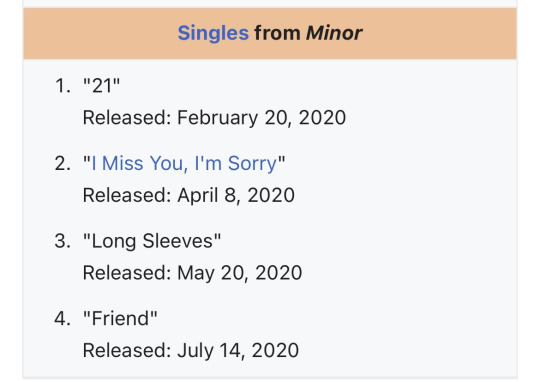

Look at the numbers on the houses ⬇️ Going column-wise there’s 226(1), 226(3) which is a 13 and there’s also ✌️✌️ which Taylor has used a ton for TTPD (Taylor said in Nov 2021 she wanted to try to plan sth 3 yrs in advance); 2267 -> 6+7=13. Adding up 2+2+6+3 also gives u 13 while 2+2+6+1=11=K. And 6+6 from the 2261, 2263 (again going column-wise) is 12 which is 21 backwards. The 13 showing up in the Risk mv just confirms these choices in the Mess It Up mv were completely intentional.

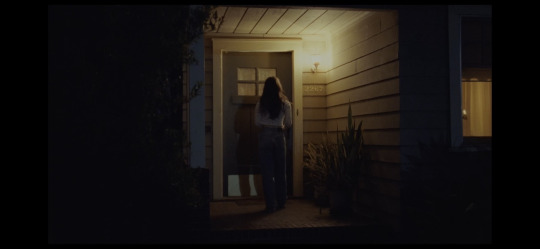
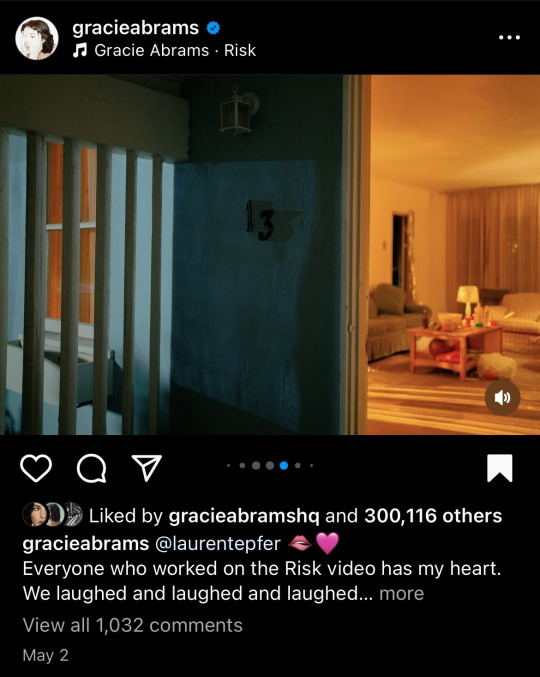
Gracie and Taylor performed I miss you, I’m sorry together at eras which was Taylor’s suggestion since Gracie’s set was canceled that day (x)(x). I just think it’s very interesting that Taylor wore a yellow dress when they sang this song and then a yr later she just so happened to be featured on the title track of Gracie’s very yellow album 💛 which they (allegedly) didn’t start writing until Nov 13 a few months later (x). This indicates that this performance was likely planned ahead of time and not a last minute decision like they said. I think much of the timeline we’ve been given for Gracie and Taylor’s friendship might be a red herring to prevent ppl from figuring out what these songs are really abt. Gracie and Taylor (allegedly) wrote us together on Nov 13, 2023 spontaneously; but Taylor wearing yellow during IMYIS along w the pap walk w the Cassandra handbag, almost burning down the house 🕯️🧯, and and the fact that all this happened on Nov 13, the day Karlie and Taylor met, indicates that us was actually written much earlier and that the Nov 13 story was just a red herring.
I know it won’t work
youtube
This song is all abt boundaries. There are different types of boundaries that show up in the mv: A shoreline, a line in the sand, a fence. It’s clear the narrator doesn’t want to end this relationship and put up walls but she believes she has no other choice bc of her circumstances (not being able to grow up -> Peter, closets).
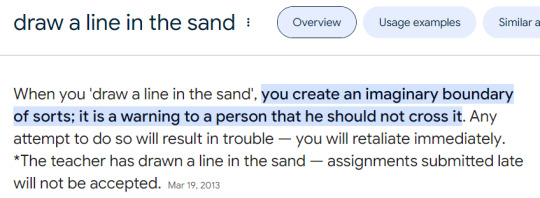
“I left you here, Heard you keep the extra closet empty, In case this year I come back and stay throughout my twenties” -> The narrator knows there’s no guarantee she’ll actually “grow up” and come out of the closet so her ex keeps the closet empty just in case she wants to move back in and stay in the closet.
“What if I won't? How am I supposed to put that gently? And down the road you will love me until you resent me” -> Since these lines directly follow the ones I just mentioned, you might be inclined to think that “What if I won’t?” is the narrator asking “What if I won’t move back in and rekindle our relationship?” BUT I believe the wording was intentionally ambiguous bc that way it could also mean “What if I won’t grow up and leave the closet? Will you eventually come to resent me if I can’t be the hero you want?”
“But it's a lot, All the shine of half a decade fadin', The whole facade seemed to fall apart, it's complicated” -> This perfectly parallels the 11/09/2019 ♠️ message. The narrator is saying her ex is asking a lot of her by wanting her to come out and destroy the facade. I believe decade might’ve been changed to half a decade so as to not make it obvious Gracie is singing from Taylor’s perspective. The “shine” symbolizes the love and support from fans that has come w being such a famous and successful artist. That’s not an easy thing to give up.

“Why won't you try movin' on for once? That might make it easy, I know we cut all the ties, but you're never really leavin'” -> Taylor knows that even if us kaylors walk away from her we will always eventually come back bc we can’t help but be invested and this puts a lot of pressure on Taylor that she doesn’t want.
“I'll open up, I'm thinkin' everythin' you wish I wasn't, The call was tough but you're better off, I'm bein' honest, So, won't you stop holdin' out for me when I don't want it? Just brush me off 'cause I'm your ghost right now, your house is haunted” -> This entire 3rd verse is extremely telling and fits perfectly w the 2019 failed coming out. The call to not come out was tough bc she was conflicted abt it but she thinks she ultimately made the right decision. Taylor is asking us to stop holding out for a coming out bc it’s not what she wants. Of course I don’t think this is how Taylor currently feels bc I think she’s getting ready to burn down the closet but I think this song shows how she felt at one point. I think the ghost imagery is supposed to connect this song w I miss you, I’m sorry and us as well as all the ghost imagery Taylor has used.
The Bottom
youtube
This song is abt hitting rock bottom and being worried that you will drag the ppl you love down w you. It’s kind of a more scathing version of Anti-Hero. I think this song could be directly related to the Mess It Up mv. Someone opens up the door to let Gracie in bc she wants to apologize by giving them a cake. But the narrator warns this person that they should keep their guard up bc she will always be doomed to repeat the same mistakes and drag ppl down w her. Since this song is kind of self explanatory, I’ll instead focus on the mv.
The first thing I noticed when watching this mv is the striking similarities to the Bejeweled mv. Both seem to be inspired by Disney movies/fairytales and even the bells during the title card parts sound similar. PLUS 🎃 anon told us to watch out for things that “ring a belle” -> there are bells in both mvs and one also shows up during the burning castle scene at the end and it is literally ringing; and Bejeweled should look and sound familiar if u have watched The Bottom mv; AND Belle is a Disney princess which is another indicator that 🎃 was referring to these mvs (Taylor wears a yellow dress just like Belle at the end of Bejeweled). Gracie said that The Bottom is supposed to be a satirical mv (see description of vid) and this parallels the Bejeweled mv being satire.
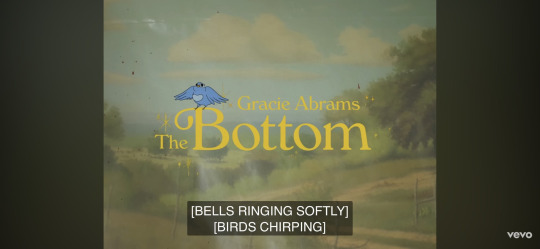
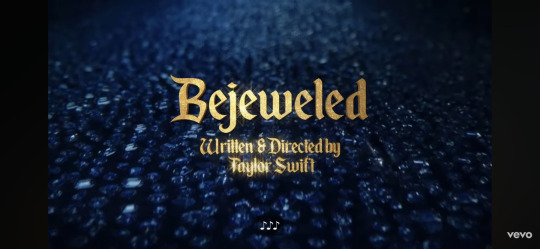
Another thing that’s interesting is that The Bottom mv is kind of the opposite of the Bejeweled mv. In The Bottom, Gracie is dragging a body down the stairs and burying it (descending) while in Bejeweled, Taylor is using an elevator to get higher and higher until she reaches the top floor (ascending). Ascending and descending are things that 🫚 emphasized in this message. Ascending and descending are also things a plane does when flying from one place to another -> “I thought the plane was going down how’d you turn it right around” and all the plane imagery lately. I think 🫚 could have been trying to get us to realize that the beginning stages of this coming out plan (the “ascent,” PR stunts w MH and 🏈, red herrings, 2023-early 2024 🛫) aren’t what we should focus on, it’s the end stages of the journey (the “descent,” cracks in the facade, getting louder w queer flagging, mid 2024-Dec 2024(?) 🛬) that are important.
Yellow shows up a few times in this mv, and I think it’s significant that the room in which the murder happens is a bright one w yellow chairs. Yellow is commonly used to symbolize happiness; Taylor and Gracie use this color in a very similar way to represent daylight/sunshine/summer/being out of the closet/not hiding your real self 💛🌼☀️🏝️ So putting these things together, this scene is symbolically similar to the yellow closet in the Lover house where Taylor has had to put away her sunshine and happiness bc she wasn’t able to come out during Lover era. What was supposed to be a joyous celebration ended w death and destruction.

It’s also interesting that throughout the mv, Gracie is dancing and performing (showmanship/PR) while in a literal spotlight. This ties in perfectly w the very last scene where Gracie is smoking a cigarette which represents bearding/red herrings/lavender haze/smokescreen/smoke and mirrors magic/Blowing Smoke/bad habits. In The Black Dog, Taylor uses smoking as an example of a bad habit/self-destructive behavior she is trying to quit.
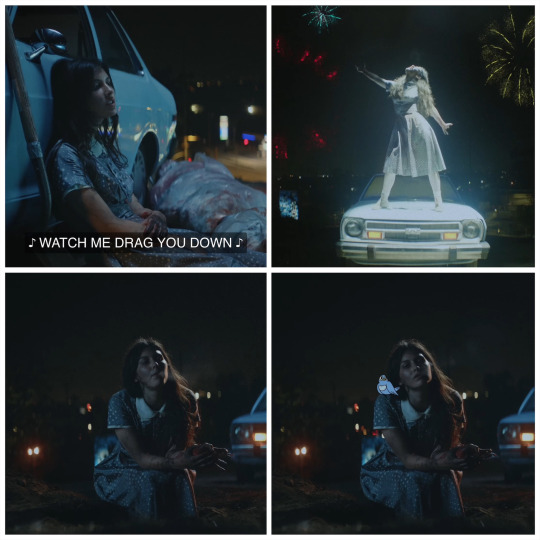
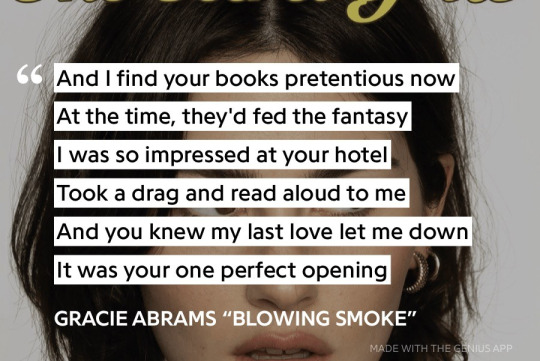

Lastly, I wanted to leave you w a few things that I think are very interesting and that could tie in w this theory:
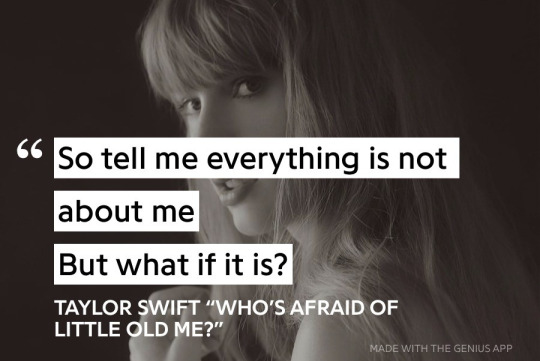

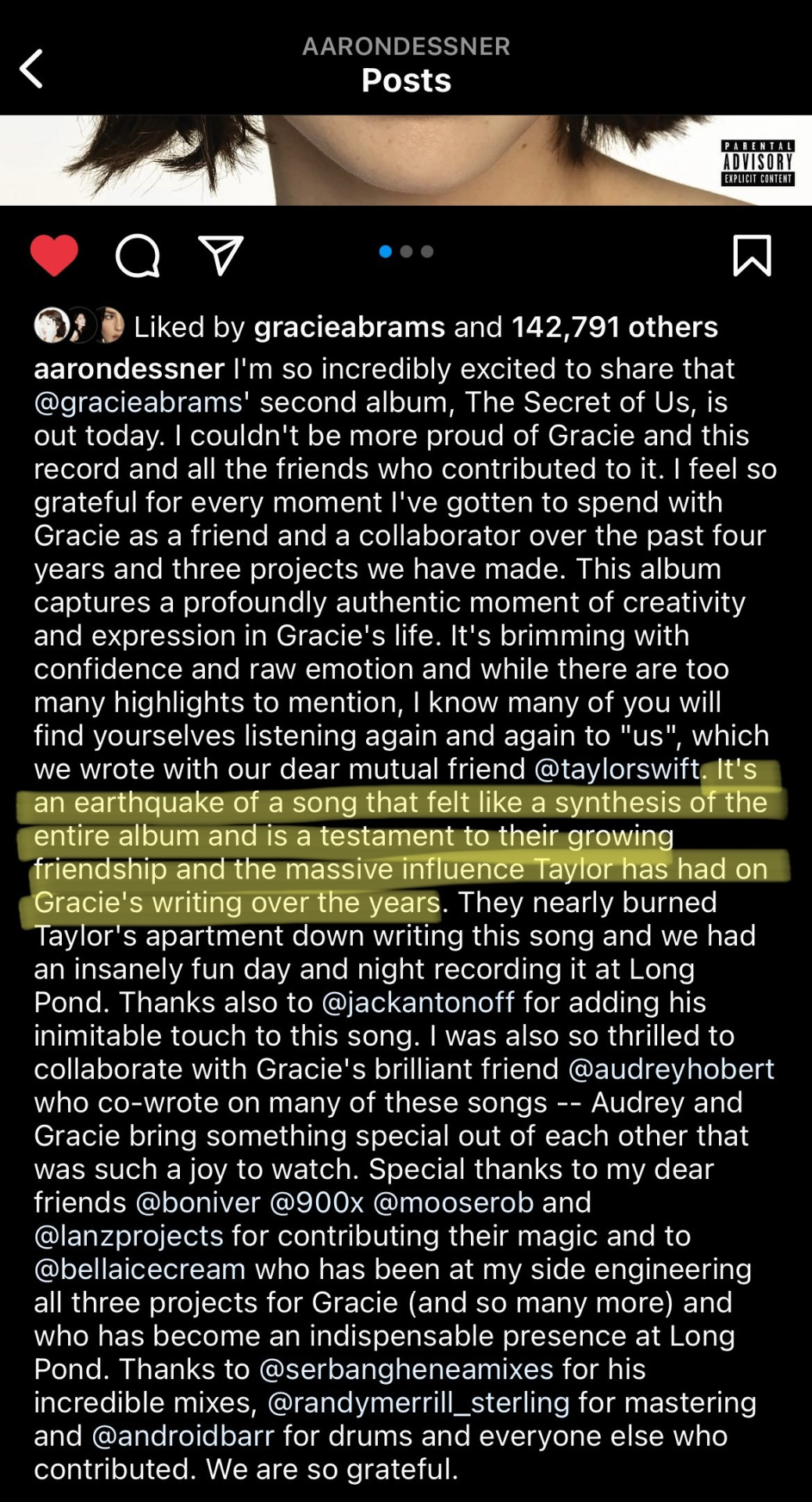
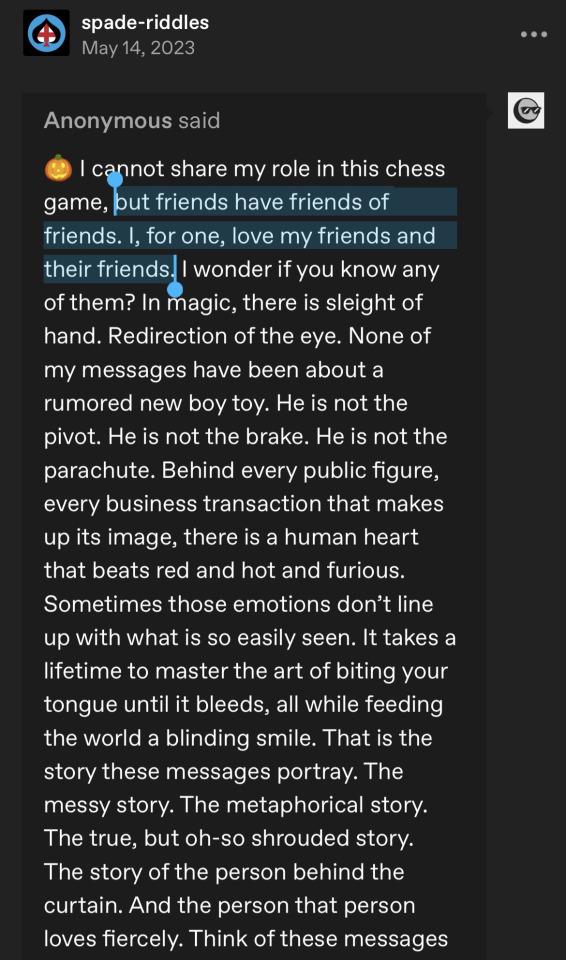
#i'm so glad i'm finally finished w this analysis i thought it would never end#the secret of us#gaylor#gaylor swift#kaylor#aimee#thank you aimee#surprise songs#6/21#6/22#eras tour#easter eggs#glitch#midsummer#daylight#london#21#30#31#13#it's actually ridiculous how many rabbit holes there are like you can get lost down there and never come out
41 notes
·
View notes
Text
Sauron vs Galadriel & gender cross-dressing
Some of my thoughts inspired by Mercury Natis esse, where she speaks about Tolkien works and Sauron deviant sexuality and female fatal parralel, that you can find here.
She looks at it in the context of the plot of Numenor and its fall, but I noticed some interesting parallels with RoP that I wanted to share.
Keep reading
👇🏼
As Mercury writes, Sauron is a different type of force and evil than Morgoth, being his sorser and left hand:
The devil's right hand is so often in biblical narrative a woman who exerts power through seductive means. She is Eve, Salome, Lilith, Delilah, Jezebel the hore of Babylon lot's daughters and I could go on and on and on and on and on.
...Melchor is our devil figure, Melchor is our Satan figure, Sauron isn't, Sauron is the left hand of the devil and as I said, the left hand of the devil is almost always a woman. And that is a very different position to be in than the figure of worship himself as opposed to the false prophet, who draws the faithful in, and makes them unfaithful, and now you're worshiping the devil. It's a very different power dynamic there.
It is no mistake that Tolkien often uses the word lust as a metaphor for the will to power a drive to dominate. what Tolkien has done on numenor is choose to still use this Trope of the Ishah Zarah/ Femme Fatale, but as he didn't want to apply it to women he chose to apply it to a male character.
In a sense, Mercury confirms Sauron's need to worship a third higher being (Morgoth, Galadriel), but if with Morgoth he did it so to speak naturally, then as for the other characters and victims of his manipulation, it was his tactic for achieving power, not a male but a female strategy, which was rewritten by the authors of the Victorian era of the 19th century in to a concept of Femme Fatale:
Alice Bach book “women's seduction and betrayal and biblical narrative” is a very comprehensive look at biblical narratives, in which women exemplify villainy. These biblical stories, Bach explains, draw on the androcentric Biblical logic that women through Eve thwarted the divine plan. The fall and in turn original sin are Eve's fault, and so that stain continues through her line and through the daughters of Eve. it is in these biblical narratives that women offer deceitful delicacies to men who greedily reach out for them no matter what the dangers.
What we're seeing in Sauron and Ar-Pharazôn relationship is a complex power Dynamic that is usually presented in gendered terms. Women in our patriarchal society have been for most of history in a position of disadvantage in terms of power. So the Femme Fatale is a fear of women using their disadvantaged positions to gain power and take that power away from Men. It is as Maria Alberto notes in her paper on Tolkien's use of Seduction in his legendarium. That ultimately the nature of Seduction is deceit and manipulation. The purpose of Seduction is the attempted increase of power. This is the crux of the spike of the Femme Fatale in the 19th century in their art and literature that poured gallons of this Trope Into the cauldron of story. The way that Sauron enacts his power over Ar-Pharazôn is through the means of the Femme Fatale. He manipulates Farazone into taking him to numenor in the first place where he subjugates and submits himself to Ar-Pharazôn voracious need for hyper masculine dominance. And through honeyed words and a beautiful face through the means of Seduction available to the Femme Fatale takes the position of power. But through the guise of being behind the throne not on it.
It is also interesting that the change in gender roles concerns both Sauron himself and Galadriel. For she, like Eowyn at the beginning of the story in the first and second seasons, embodies the behavior typical of male characters:
- Worrier
- Active
- Powerful
- In control
Whereas Sauron's manner of interaction with Celebrimbor in the second season is purely feminine:
- give counsel
- understand/ empathizes
- passive
To understand the transference of gendered tropes across gender boundaries it is useful to just briefly review the feminine principle in Tolkien's legendarium as Melanie Rawls put it in 1984.
Rawls identifies that Tolkien doesn't limit traditional gender roles to sex bodies. Male characters like Elrond and Faramir can act in feminine ways and female characters like Eovin can act in masculine ways. She identifies that in Arda the prime feminine characteristic is understanding, and the prime masculine characteristic is power. Feminines give counsel and masculine's act. In the case of feminines a good feminine is merciful and compassionate, bad feminines can be anywhere from wholly passive to devouring in their selfishness. Another way to put it is that feminines influence the world around them through understanding, through words and emotional attention, whereas masculines influence the world around them through action.
What is interesting is that in the first season Sauron plays the role of a secondary, driven character compared to Galadriel, but still a courageous, lost king who possesses all the characteristics of masculinity presented in the legends:
- sacrificial
- brave
- Active
And I am sure that it was these qualities that attracted/tempted Galadriel as a female character. And that power and her ambitions went hand in hand with them, because:
In Rawls his own words the feminine principle shapes individuals the masculine principle shapes events. What Rawls misses that Saluron does both of these things, and in the second age before he loses his body his primary mode of shaping events is through shaping individuals, and making individuals do the acting in his stead, using people, notably all male characters, as pawns towards their own destruction. Sauron's influence on Ar-Pharazôn is a prime example of this, where he uses his feminine characteristics as a tool to shape Numenor's demise.
The way that the seduction mechanism works with Sauron is about giving the other person the illusion of power, so they have to want power to enact that power on him, and then he goes, well actually I had the power the entire time so it's fine.
And yet he does not show his ambitions to dominate Galadrel, at least directly allowing her to think that she is in control of the situation. Supporting her ambitions for power with his service, her power over him, using his"false femininity":
in her assessment of tolkien's use of the word lust, Emma Hawkins notes that Tolkien seems to reject the idea that Evil just happens to people. Rather than being unsuspecting innocent victims evil is made through choices and in terms of a lust man is complicit in his own ruin. Herod and Ar-Pharazôn in being subject to their lusts are seduced But ultimately make the choice to give their seducers exactly what they want.
So when Sauron reveals his identity to her at the end of season one, on top of all the other obstacles to accepting the fact that Halbrant is Sauron, one of the hardest things to deal with was accepting that gender roles themselves had changed and changed forever.
And we see this at the end of the second season in their duel. When Galadriel is finally defeated in a direct confrontation with him.
But it is not the loss itself that is so painful, but the fact that Galadriel did not know herself or did not remember herself in any other role except the role of a warrior (male), which she herself admitted in a conversation with Elrond.
Gal- Who will I be without a sword?
Elrond- My friend
(not exact quote sorry)
So yes, season 3 is in many ways for me an expectation of how they will play out this internal growth of a character who is forced to leave his usual gender role and get to know himself from a completely new side, and reveal new side of a power that go hand by hand with that.
(Which essentially fits perfectly into her arc of transformation into a powerful forest witch and mastery of magic, namely, inner feminine powers).
This opens up an interesting window into their battle in Season 2, where essentially the false femininity of Sauron battles the false masculinity of Galadriel. And ultimately, they both fail to achieve their goals in this battle. Sauron in tempting Galadriel, and Galadriel in defeating Sauron with brute force.
Whether this theme will be further developed in the third season and whether it will become key at all, I don’t know, but the fact that it is present in Tolkien’s legendarium itself and in RoP cannot be completely ruled out.
How Mercury said in here esse, Tolkien was very specific on this topic:
In the feminine principle Rawls notes that where masculine and feminine are in harmony there is good, but evil is a result of insufficiency or disharmony of one or the other. In this case the evil is found in a cacophonous disharmony of the masculine and The Feminine where they are both fighting for control rather than actually working together.
#the rings of power#sauron#annatar#charlie vickers#amazon rings of power#galadriel#lord of the rings#morfydd clark#haladriel#rings of power
23 notes
·
View notes
Text
Love you to Hell and back
Reader is gender neutral
A/N: inspired by my s/i. I don't know what it is but I was bored.
Summary: Frollo discovers that his spouse of many years is the incarnation of a very powerful demon of lust. He wants to forget about them but it’s hard to bury old love. Especially when the old love is immortal.

You were sitting on your throne and sipping wine. With the last of your willpower, you decided not to check in the vision, what your husband was doing. Or rather ex-husband.
You should know better than this. He left you, he cursed you. Why were you missing him? Sure, you spent many years together but there were many men in the world more handsome than him. Smarter. Kinder. Better for you. Unfortunately, you didn’t like things that were good for you.
The door opened and your counselor entered the chamber. You showed him a comfortable armchair nearby but he only shook his head.
“You have a visitor” he informed. You raised your eyebrow, wondering what they now want for you. Deciding to help people with your powers was probably one of the worst ideas you had because you could afford a moment of peace anymore. You felt like a hellish social care: overworked, understaffed and underpaid (okay, you had your palace so maybe there weren’t so much to complain about).
“Who are they?”
“Your husband”
You almost spat out your wine. What was HE doing there? Of course, you expected him to end up in Hell, but not so quickly.
“Tell him to wait a few minutes” you quickly ran to the bathroom. Waiting will make him more humble. And you couldn’t meet him again after a few years, being sweaty, stinky and in loose clothes after work. Claude needs a reminder of what he lost. Your main specialization was lust after all!
When you finally got out, bathed and in your most luxurious, sluttiest clothes, trying to act as if it was your natural state, you found your unofficially-ex-husband walking around your chamber. He looked at everything, but you could notice that he wasn’t actually paying attention to what was around him; he was too nervous for that.
You cleared your throat. Frollo looked at you and he was clearly stunned. Putting aside your clothes, you took on your human look, the one he knew so well after 20 years of marriage (though you decided to look a bit younger than the last time he saw you).
“It’s a surprise” you said in a bit hoarse voice. You cleared your throat again and asked: “what brings you here?”
“Well, I decided it’s the best moment to talk” he straightened up, trying to show all his power and confidence. Which is hard when you stand in the middle of Hell.
“About what? I thought we already cleared everything between us” you tried not to show how nervous and excited this moment made you. Oh, you tried to forget about Claude but the mere sight of him made you feel a familiar heat in your groin. He was dressed in his everyday robe but you remember every detail of body hidden under it, every inch of skin you used to caress with your fingers. Only thing that comforted you was the knowledge that he missed your touch as well. You wouldn’t admit it but for some time you liked to spy on his dreams and you were pleased to discover that many of them include you two getting naked and wet.
“I realized that when we last saw each other I might have acted… too emotionally”
“It’s a little understatement” you stated calmly “You called me a devil’s spawn, a whore of Babylon and the curse of your life”
Frollo shifted, uneasy.
“I am utterly sorry for my behavior, you must understand that I was in a state of shock. Not everyday you discover that your spouse is a demon. I came here to ask for forgiveness”
You stepped closer and took his chin in your hand. Frollo looked in your eyes and didn’t move away even when your sharp nails dug into his skin.
“And why do you want this? I suppose you didn’t come to Hell just because you felt guilty for one argument”
For a brief moment, his gaze rested at your lips.
“I- I miss you. And I would like you to come back”
Your eyes sparked like a flame, enjoying both his desire and his submission in that moment. For all people of Paris, he might have been a despotic cruel judge. They probably thought you were trapped in that relationship. But you loved him in your own twisted way, and you admired his wickedness, all the darkest and most obsessive parts of his soul. And you had your ways to stay free under his eye. His lust was a weapon you learned to use to keep him in line. He desired you so much, he became your little puppet, ready to do everything to please you, believing the whole time that he’s the one giving orders in your relationship. Oh, how you missed having him at your feet.
“Do you want to forget the past… and be together again?”
You smiled and pulled him closer to yourself.
“Of course darling” you put your hand on the back of his neck, leaning over as if getting ready for a kiss “I never left, to be honest. Since the day you took me to your chambers, you were mine. And no devil will ever pry you from my hands. Understood?”
Frollo nodded and kissed you. You pressed your body to his, your hands roamed his back and squeezed on his flesh. He was your love. He was your slave. He was your addiction and the only thing that could bring you down.
#judge claude frollo#claude frollo#claude frollo x reader#judge claude frollo x reader#disney villains
110 notes
·
View notes
Text
by Jake Wallis Simons
People often forget that Judaism is two millennia older than Islam and 1,500 years older than Christianity. Israel was the cradle of Jewish civilisation. At least a thousand years before the birth of Jesus Christ, Jerusalem’s most famous Jew, King David, made the city the capital of the Land of Israel. It has been home to greater or lesser numbers of Jews – the very word ‘Jew’ is a shortening of Judea, the ancient kingdom radiating from Jerusalem in the Iron Age – in Jerusalem ever since.
Culturally, Jews have always intertwined their identity with the land of Israel, particularly since they were exiled to Babylon around 598 BC, when their powerful yearning for return took hold. For millennia, Jews in the diaspora have prayed facing towards the Holy City, exclaimed ‘next year in Jerusalem’ at Passover, mourned the destruction of the Temple by breaking a glass at weddings, longed to be buried there, prayed at the remaining walls of the destroyed Temple, and visited on pilgrimage. Many throughout history have taken the step of uprooting their families and returning to their homeland. All these practices continue to this day.
A thread can be traced backwards through Jewish history that shows the ancient roots of the ideal of repatriation. Beginning in 1516, Palestine – as it had been renamed by the Romans – fell under Ottoman rule, which would last for more than 400 years. Less than 50 years after the conquest, Joseph Nasi, the Duke of Naxos, a Portuguese Jewish diplomat favoured by the Ottomans, attempted to return Jews to their homeland without regard for scriptural prophecies about awaiting the coming of the messiah. In a way, he was the first Zionist.
The fortunes of the Jews of the Holy Land rose and fell over the following centuries. In 1860, the British financier Sir Moses Montefiore, who believed in the divine providence of the British Empire and the Jewish return to Zion, founded the community of Mishkenot Shana’anim just outside the Old City of Jerusalem. Composed of red-brick alms houses and a windmill, it was the earliest forerunner of the future state (the windmill still stands today).
Modern Jewish migration to Palestine began in 1883 with an influx of 25,000 Jewish arrivals, many fleeing anti-Semitic mobs in Russia and inspired by a desire to return to their ancestral lands. Jews also came from as far afield as Persia and Yemen, grouping into their own neighbourhoods. Immigrants from Bukhara, Uzbekistan, including the Moussaieff family of jewellers who had cut diamonds for Genghis Khan, created the Bukharan Quarter (Shkhunat HaBucharim), with its distinctly Central Asian feel. Their imperative to return had been building for thousands of years.

Theodor Herzl in Basel, Switzerland, during the first Zionist Congress, 1897.
Writing in the Jewish Chronicle in 1896, Theodor Herzl, the father of modern Israel, laid out the concept of Zionism. ‘I am introducing no new idea’, he pointed out. ‘On the contrary, it is a very old one. It is a universal idea – and therein lies its power – old as the people, which never, even in the time of bitterest calamity, ceased to cherish it. This is the restoration of the Jewish State.’ He added: ‘It is remarkable that we Jews should have dreamt this kingly dream all through the long night of our history. Now day is dawning. We need only rub the sleep out of our eyes, stretch our limbs, and convert the dream into a reality
24 notes
·
View notes
Note
Speaking of different Hornsent cultures, do you also think Midra is a part of that culture as well? The ghost in his manse dies suggest they're both Hornsent
I do think Midra is meant to be a part of the hornsent culture, yeah! Not only do the manse spirits and the inquisition storyline suggest that he's hornsent, but his manse is FULL of architectural details that you can find across all hornsent settlements!
We have to mention first though that Midra doesn’t have horns (and it doesn’t seem like Nanaya has horns either under her headscarf?), but it does seem that there were hornsent in Belurat who did not have horns... technically, “tower folk” might be a more accurate way of describing them in that regard, though the game seems to refer to the culture and those who lived in the Lands of the Tower collectively as both “hornsent” and “tower folk”: “Long ago, Queen Marika commanded Sir Messmer to purge the tower folk” (Leda). “Scorpion simmered in a black soup. Traditional meal of the hornsent” (Scorpion Stew). I'd guess that it was just less common, and not as well regarded, to be hornless, so the culture is still pretty defined by having horns even if it's not a universal trait (again, the hornsent aren't a species, they're just people who are very strongly affected by the Crucible's influence, just like how the animals of the Shadow Lands can often be found with horns too).
Anyway back to Midra – because he doesn't have horns, it is possible that he wasn't born hornsent and simply adopted the culture. Nanaya though has an extra cultural detail that makes me feel like she might have been born into hornsent culture... “Nanaya” was the name of an ancient Mesopotamian goddess of love! The hornsent civilization is extremely heavily inspired by ancient Mesopotamia, especially Babylon: the name Enir-Ilim comes from the Akkadian name for Babylon, Bāb-ilim — “the gate of the gods,” and the Tower with its Divine Gate is pretty obviously a reference to the Tower of Babel… so the fact that Nanaya has a Mesopotamian name, when we know the game used other words from ancient Mesopotamia for the hornsent, makes it VERY likely to me that she is a native of the tower lands! But even if Midra and/or Nanaya aren’t tower folk and originally came from a different culture (some have theorized that they’re numen), it’s pretty clear to me that they’ve at least adopted the tower culture due to all the visual and story details associated with them and their manse.
Architecturally, the Manse very obviously uses a lot of the same stylistic details as structures in Belurat and other hornsent settlements. The front door to the Manse has the same metal relief design as the doors in Belurat:


(Midra’s Manse front door; Belurat front door)
the Manse is also decorated with the same spiraled columns that are a staple in all hornsent settlements, as well as the same spiral tree motif that can be found on walls and stone tablets in Belurat:
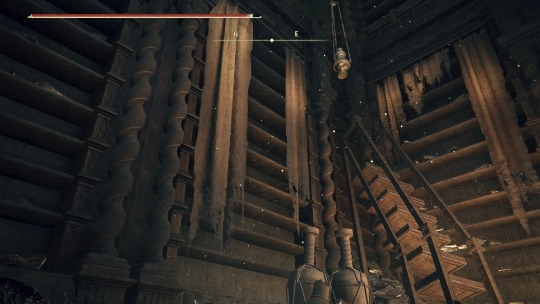
(Midra's Manse library)


(Midra's boss room; Manse front room)
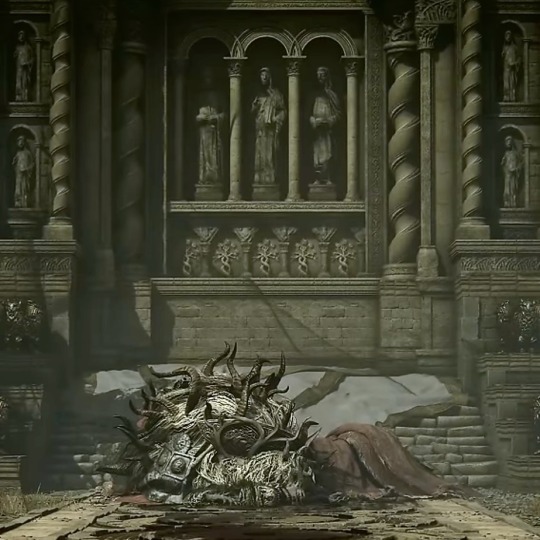
(Theatre of the Divine Beast, Belurat)

(Small Private Altar, Belurat)
Midra's robes are pretty nondescript, but Nanaya's outfit absolutely screams hornsent; there are so many details in her outfit evoking the hornsent culture. The decorative trim on her robes have a spiral design, which is a motif found in a lot of hornsent art and architecture:
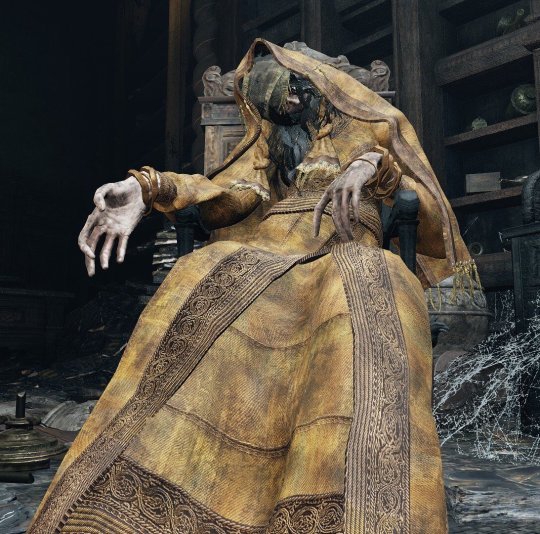

(Enir-Ilim)
and the twisted fabric framing Nanaya’s face reminds me of the twisted drapes found in the Theatre of the Divine Beast and Enir-Ilim:

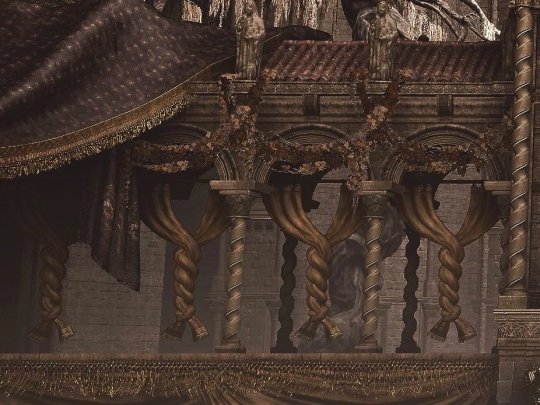
(Theatre of the Divine Beast, Belurat)

(Enir-Ilim)
Midra and Nanaya had a lot of hornsent followers who lived in their manse who you can still find as spirits and shades. The dialogue and item descriptions related to Midra and his followers make it very clear that when the inquisition stepped in, the violence they were committing was against their own people:

"I beg you stop. Haven't I taken enough? Are we not brethren, common in our line? And yet, you offer only cruelty... I ask; what crime did great Midra commit?" (Manse spirit NPC)
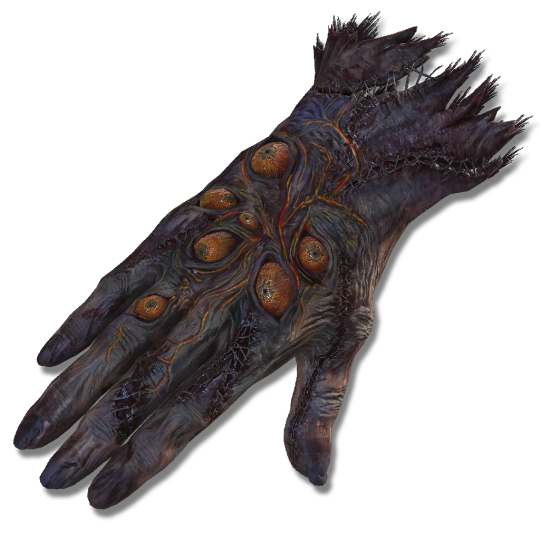
"A glove stitched together from the flayed skin of the victims of a butcherous bloodbath. [...] Forged of an unyielding, black impulse toward revenge fostered in those who were hunted down as heretics by their own brethren, these are the weapons of the utterly downtrodden." (Madding Hand)
and yes, I think Midra and Nanaya are included in this! There’s kind of a pattern in the hornsent civilization of the elites (represented by the inquisition) suppressing different subgroups within their own culture for not adhering to the status-quo: this includes the Curseblades, the Lamenter, and Midra and his followers. I wonder if Midra held some independent beliefs that had nothing to do with the frenzied flame that made him suspicious in the eyes of the inquisition? He was known as "Sage Midra," and had a great library in his manse... it makes me think that he was some revolutionary scholar and thinker who inspired a lot of hornsent to follow him at his manse. I wonder if him not having horns and still having so much influence over other hornsent could have been seen as a threat to the inquisition’s image of (horned) supremacy??
#elden ring#midra#midra lord of frenzied flame#nanaya#asks#the tower folk were so complex and diverse its super fascinating
108 notes
·
View notes
Text
The image the west painted about arabs and SWANA ppl centuries ago, how is it still used today, and why is that image harmful to SWANA group
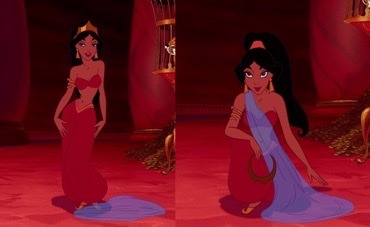
First of all, what is Orientalism? based on the definition by Edward Said, orientalism is a "created body of theory and practice" which constructs images of the Orient or the East directed toward those in the West.
Representations of the East as exotic, feminine, weak and vulnerable reflect and define how the West views itself as rational, masculine and powerful. These can be seen in paintings as well as media.
The painting were obsessed w the idea of the Harem women, which affected all SWANA ppl, including Persian and Turkish women as well. Stereotypes and orientalist depictions of arabs and SWANA ppl are still used till this day.
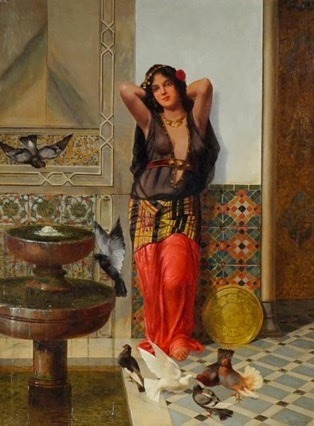
Le Corsaire (1856), takes place in Turkey and focuses on a love story between a pirate and a beautiful slave girl. Scenes include a bazaar where women are sold to men as slaves, and the Pasha's Palace, which features his harem of wives.
Petipa's The Pharaoh's Daughter (1862), an Englishman imagines himself, in an opium-induced dream, as an Egyptian boy who wins the love of the Pharaoh's daughter, Aspicia. Her costume consisted of 'Egyptian' décor on a tutu.
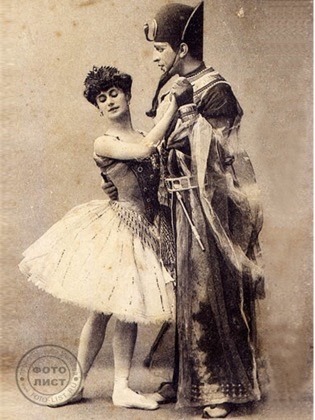
Fatima (1897) and Fatima’s Dance (1907), which were the very first portrayals of Arab woman as a veiled belly dancer. These sexualized and objectified Arab women.

Sheherazade (1910), involves a shah's wife and her relations with a Golden Slave. It includes an orgy in an oriental harem. When the shah discovers the actions of his numerous wives and their lovers, he orders the deaths of those involved. Also based on One Thousand & One Nights.

The sheik (1921), takes place in Algeria, where Lady Diana disguise herself as a dancing girl to become one of the prospective brides, yet is unable to go through with the deception bc the sheik liked her. the sheik later abducts her, intending to make her fall in love with him.
The movie didnt even have the accurate Algerian traditional clothing and Algerians dancing clothes arent the “belly dancing inspired” clothes. The stereotype that a SWANA man would abduct a white women to make her fall inlove w him too…
Lalla Fatma N'Soumer, an Algerian anti-colonial leader during 1849–1857 of the French conquest of Algeria and subsequent Pacification of Algeria. She is an Algerian national hero. The pictures show the Algerian traditional wear, which isnt close to the ones in the movie.
Here is an Algerian woman wearing a Haik, again not dressed as the movie shows.

Mickey in Arabia (1932) by Disney, taking place in the Arabian Desert, where Mickey and Minnie are exploring the area I assume. Later, Minnie gets kidnapped by a Sultan. Again, portraying men from SWANA or arab men in this case as predatory and barbaric.
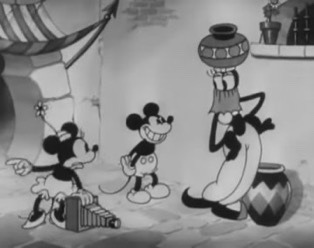
Abdullah the Great aka. Abdullah’s Harem (1955), about an Arab sheikh and a European model. He’s always with the Arab women he bought, along with belly dancers. He still tries to seduce Ronnie. He then attempts to drug her in order to sleep with her, but fails and gets dethroned.
So far all these movies continue to have the same narrative, continue to sexualize Arab and SWANA women, always portraying them as belly dancers and/or harem women. The Arab and SWANA men as barbaric and predatory. Themes that will continue to exist till this day.
Babes in Baghdad (1952) Arabian Nights princess goes on strike demanding equal rights for women, to the frustration of the caliph. Aided by the caliph's godson, she enables the caliph to see the error of his polygamous ways, and he eventually settles down with his wife.
The Queen of Babylon (1954), about a king's concubine that loves a Chaldean rebel in ninth-century B.C. Assyria. I Am Semiramis (1963), in ninth-century B.C. Assyrian Queen Semiramis loves an enslaved Dardanian king. mind u assyrians dont dress like egyptians
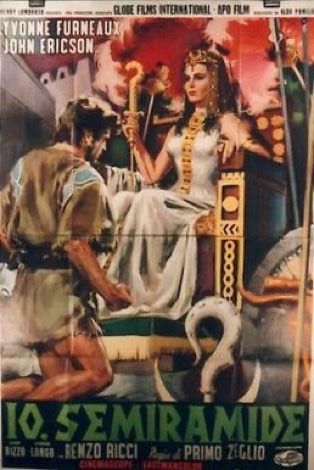
Fast forward to the 90s and early 2000s, the same stereotype surrounding SWANA ppl persisted Aladdin(1992), Aladdin meets Princess Jasmine, daughter of the sultan of Agrabah. They both have to deal with evil sorcerer Jafar from overthrowing Jasmine's kingdom.
Jasmine was sexualized (even tho shes a minor), she seduces Jaffar, and was put in a harem/belly dancer fit. the same portrayal of Arab women. The movie also features harem women. Jaffar w big nose, painting arab men as ugly, sinister and ruled by sexual desires, again.
Braceface (2002), the harem thing again. Totally spice (2002) with harem inspired fits Around the World in Eighty Days (2004) by Disney, Arab sheikh his wives that were objectified through the scenes.

After 9/11, “Arabs are terrorists” and xenophobic remakes towards arabs increased. Air Marshal (2003), The stone merchant (2006), The kingdom (2007), and many more all portrayed arabs as terrorists. Family guy(?) and shameless (2012, S2) with jokes about k!lling iraqis
Bratz: Desert Jewelz (2012) and Aladdin (2019) had the same orientalist themes as the 1001 Arabian nights (1959) and as well as the older movies.
Today, inaccurate and offensive Arab/SWANA representation is still the same. Arabs are either rich sheikhs, terrorists, or exotic belly dancers. not only that, u rarely see any arab or SWANA actor/actress get good roles, its always reduced to the terrorists role.
Whats mentioned in the thread isnt only harmful to how SWANA ppl are viewed, but how they’re treated as well. In 2002 to 2005, Philippe Servaty engaged in sex with over 80 Moroccan women, promising to take them to Belgium.
He asked them for sexual photos and photographed them in poses that could be seen as degrading. They included ejaculating on the face of a veiled woman and having another woman kneel, bound, and gagged while he urinated on her. After returning to Belgium, he published the photos.
with assyrians and persians ppl still use the same harem belly dancer clothing and its not even accurate. egyptians are always portrayed as belly dancers, also inaccurate.
SWANA ppl are still treated as fictional characters. Dune (2021) uses orientalist themes and is inspired by SWANA cultures. many offensive media made ab arabs, but wont i b able to fit all here. racism/xenophobia against ppl in SWANA didnt start with 9/11 and its not over either.

twt original thread here!
82 notes
·
View notes
Text
Wrestling with the Bible's war stories
Spend any solid amount of time with scripture and you'll run into something that perplexes, disturbs, or downright horrifies you. Many of us have walked away from the Bible or from Christianity in general, sometimes temporarily and sometimes permanently, after encountering these stories. So how do we face them, wrestle them, and seek God's presence in (or in spite of) them?
In her book Inspired: Slaying Giants, Walking on Water, and Loving the Bible Again, the late Rachel Held Evans spends a whole chapter on the "war stories" of Joshua, Judges, and the books of Samuel and Kings. She starts with how most teachers in her conservative Christian upbringing shut her down every time she tried to name the horror she felt reading of violence, rape, and ethnic cleansing; I share an excerpt from that part of the chapter over in this post.
That excerpt ends with Evans deciding that she needed to grapple with these stories, or lose her faith entirely.
...But then I ended the excerpt, with the hope that folks would go read all of Inspired for themselves — and I still very much recommend doing so! The whole book is incredibly helpful for relearning how to read scripture in a way that honors its historical context and divine inspiration, and takes seriously how misreadings bring harm to individuals and whole people groups.
But I know not everyone will read the book, for a variety of reasons, and that's okay. So I want to include a long excerpt from the rest of the chapter, where Evans provides cultural context and history that helps us understand why those war stories are in there; and then seeks to find where God's inspiration is among those "human fingerprints."
I know how important it was to Rachel Held Evans that all of us experience healing and liberation, so it is my hope that she'd be okay with me pasting such a huge chunk of the book for reading here. If you find what's in this post meaningful, please do check out the rest of her book! A lot of libraries have it in print, ebook, and/or audiobook form.
[One last comment: the following excerpt focuses on these war stories from the Hebrew scriptures ("Old Testament"), but there are violent and otherwise disturbing stories in the "New Testament" too, from Herod killing babies to all the wild things going on in Revelation. Don't fall for the antisemitic claim that "The Old Testament is violent while the New Testament is all about peace!" All parts of scripture include violent passages, and maintain an overarching theme of justice and love.]
Here's the excerpt showing Rachel's long wrestling with the Bible's war stories, starting with an explanation for why they're in there in the first place:
“By the time many of the Bible’s war stories were written down, several generations had passed, and Israel had evolved from a scrappy band of nomads living in the shadows of Babylon, Egypt, and Assyria to a nation that could hold its own, complete with a monarchy. Scripture embraces that underdog status in order to credit God with Israel’s success and to remind a new generation that “some trust in chariots and some in horses, but we trust in the name of the LORD our God” (Psalm 20:7). The story of David and Goliath, in which a shepherd boy takes down one of those legendary Canaanite giants with just a slingshot and two stones, epitomizes Israel’s self-understanding as a humble people improbably beloved, victorious only by the grace and favor of a God who rescued them from Egypt, walked with them through the desert, brought the walls of Jericho down, and made that shepherd boy a king. To reinforce the miraculous nature of Israel’s victories, the writers of Joshua and Judges describe forces of hundreds defeating armies of thousands with epic totality. These numbers are likely exaggerated and, in keeping literary conventions of the day, rely more on drama and bravado than the straightforward recitation of fact. Those of us troubled by language about the “extermination” of Canaanite populations may find some comfort in the fact that scholars and archaeologists doubt the early skirmishes of Israel’s history actually resulted in genocide.
It was common for warring tribes in ancient Mesopotamia to refer to decisive victories as “complete annihilation” or “total destruction,” even when their enemies lived to fight another day. (The Moabites, for example, claimed in an extrabiblical text that after their victory in a battle against an Israelite army, the nation of Israel “utterly perished for always,” which obviously isn’t the case. And even in Scripture itself, stories of conflicts with Canaanite tribes persist through the book of Judges and into Israel’s monarchy, which would suggest Joshua’s armies did not in fact wipe them from the face of the earth, at least not in a literal sense.)
Theologian Paul Copan called it “the language of conventional warfare rhetoric,” which “the knowing ancient Near Eastern reader recognized as hyperbole.” Pastor and author of The Skeletons in God’s Closet, Joshua Ryan Butler, dubbed it “ancient trash talk.”
Even Jericho, which twenty-first-century readers like to imagine as a colorful, bustling city with walls that reached the sky, was in actuality a small, six-acre military outpost, unlikely to support many civilians but, as was common, included a prostitute and her family. Most of the “cities” described in the book of Joshua were likely the same. So, like every culture before and after, Israel told its war stories with flourish, using the language and literary conventions that best advanced the agendas of storytellers.
As Peter Enns explained, for the biblical writers, “Writing about the past was never simply about understanding the past for its own sake, but about shaping, molding and creating the past to speak to the present.”
“The Bible looks the way it does,” he concluded, “because God lets his children tell the story.”
You see the children’s fingerprints all over the pages of Scripture, from its origin stories to its deliverance narratives to its tales of land, war, and monarchy.
For example, as the Bible moves from conquest to settlement, we encounter two markedly different accounts of the lives of Kings Saul, David, and Solomon and the friends and enemies who shaped their reigns. The first appears in 1 and 2 Samuel and 1 and 2 Kings. These books include all the unflattering details of kingdom politics, including the account of how King David had a man killed so he could take the man’s wife, Bathsheba, for himself.
On the other hand, 1 and 2 Chronicles omit the story of David and Bathsheba altogether, along with much of the unseemly violence and drama around the transition of power between David and Solomon.
This is because Samuel and Kings were likely written during the Babylonian exile, when the people of Israel were struggling to understand what they had done wrong for God to allow their enemies to overtake them, and 1 and 2 Chronicles were composed much later, after the Jews had returned to the land, eager to pick up the pieces.
While the authors of Samuel and Kings viewed the monarchy as a morality tale to help them understand their present circumstances, the authors of the Chronicles recalled the monarchy with nostalgia, a reminder of their connection to God’s anointed as they sought healing and unity. As a result, you get two noticeably different takes on the very same historic events.
In other words, the authors of Scripture, like the authors of any other work (including this one!), wrote with agendas. They wrote for a specific audience from a specific religious, social, and political context, and thus made creative decisions based on that audience and context.
Of course, this raises some important questions, like: Can war stories be inspired? Can political propaganda be God-breathed? To what degree did the Spirit guide the preservation of these narratives, and is there something sacred to be uncovered beneath all these human fingerprints?
I don’t know the answers to all these questions, but I do know a few things.
The first is that not every character in these violent stories stuck with the script. After Jephthah sacrificed his daughter as a burnt offering in exchange for God’s aid in battle, the young women of Israel engaged in a public act of grief marking the injustice. The text reports, “From this comes the Israelite tradition that each year the young women of Israel go out for four days to commemorate the daughter of Jephthah” (Judges 11:39–40).
While the men moved on to fight another battle, the women stopped to acknowledge that something terrible had happened here, and with what little social and political power they had, they protested—every year for four days. They refused to let the nation forget what it had done in God’s name.
In another story, a woman named Rizpah, one of King Saul’s concubines, suffered the full force of the monarchy’s cruelty when King David agreed to hand over two of her sons to be hanged by the Gibeonites in an effort to settle a long, bloody dispute between the factions believed to be the cause of widespread famine across the land. A sort of biblical Antigone, Rizpah guarded her sons’ bodies from birds and wild beasts for weeks, until at last the rain came and they could be buried. Word of her tragic stand spread across the kingdom and inspired David to pause to grieve the violence his house had wrought (2 Samuel 21).” ...
The point is, if you pay attention to the women, a more complex history of Israel’s conquests emerges. Their stories invite the reader to consider the human cost of violence and patriarchy, and in that sense prove instructive to all who wish to work for a better world. ...
It’s not always clear what we are meant to learn from the Bible’s most troubling stories, but if we simply look away, we learn nothing.
In one of the most moving spiritual exercises of my adult faith, an artist friend and I created a liturgy of lament honoring the victims of the texts of terror. On a chilly December evening, we sat around the coffee table in my living room and lit candles in memory of Hagar, Jephthah’s daughter, the concubine from Judges 19, and Tamar, the daughter of King David who was raped by her half brother. We read their stories, along with poetry and reflections composed by modern-day women who have survived gender-based violence. ...
If the Bible’s texts of terror compel us to face with fresh horror and resolve the ongoing oppression and exploitation of women, then perhaps these stories do not trouble us in vain. Perhaps we can use them for some good.
The second thing I know is that we are not as different from the ancient Israelites as we would like to believe.
“It was a violent and tribal culture,” people like to say of ancient Israel to explain away its actions in Canaan. But, as Joshua Ryan Butler astutely observed, when it comes to civilian casualties, “we tend to hold the ancients to a much higher standard than we hold ourselves.” In the time it took me to write this chapter, nearly one thousand civilians were killed in airstrikes in Iraq and Syria, many of them women and children. The atomic bombs dropped on Hiroshima and Nagasaki took hundreds of thousands of lives in World War II, and far more civilians died in the Korean War and Vietnam War than American soldiers. Even though America is one of the wealthiest countries in the world, it takes in less than half of 1 percent of the world’s refugees, and drone warfare has left many thousands of families across the Middle East terrorized.
This is not to excuse Israel’s violence, because modern-day violence is also bad, nor is it to trivialize debates over just war theory and US involvement in various historical conflicts, which are complex issues far beyond the scope of this book. Rather, it ought to challenge us to engage the Bible’s war stories with a bit more humility and introspection, willing to channel some of our horror over atrocities past into questioning elements of the war machines that still roll on today.
Finally, the last thing I know is this: If the God of the Bible is true, and if God became flesh and blood in the person of Jesus Christ, and if Jesus Christ is—as theologian Greg Boyd put it—“the revelation that culminates and supersedes all others,” then God would rather die by violence than commit it.
The cross makes this plain. On the cross, Christ not only bore the brunt of human cruelty and bloodlust and fear, he remained faithful to the nonviolence he taught and modeled throughout his ministry. Boyd called it “the Crucifixion of the Warrior God,” and in a two-volume work by that name asserted that “on the cross, the diabolic violent warrior god we have all-too-frequently pledged allegiance to has been forever repudiated.” On the cross, Jesus chose to align himself with victims of suffering rather than the inflictors of it.
At the heart of the doctrine of the incarnation is the stunning claim that Jesus is what God is like. “No one has ever seen God,” declared John in his gospel, “but the one and only Son, who is himself God and is in closest relationship with the Father, has made him known” (John 1:18, emphasis added). ...So to whatever extent God owes us an explanation for the Bible’s war stories, Jesus is that explanation. And Christ the King won his kingdom without war.
Jesus turned the war story on its head. Instead of being born to nobility, he was born in a manger, to an oppressed people in occupied territory. Instead of charging into Jerusalem on a warhorse, he arrived on a lumbering donkey. Instead of rallying troops for battle, he washed his disciples’ feet. According to the apostle Paul, these are the tales followers of Jesus should be telling—with our words, with our art, and with our lives.
Of course, this still leaves us to grapple with the competing biblical portraits of God as the instigator of violence and God as the repudiator of violence.
Boyd argued that God serves as a sort of “heavenly missionary” who temporarily accommodates the brutal practices and beliefs of various cultures without condoning them in order to gradually influence God’s people toward justice. Insofar as any divine portrait reflects a character at odds with the cross, he said, it must be considered accommodation. It’s an interesting theory, though I confess I’m only halfway through Boyd’s 1,492 pages, so I’ve yet to fully consider it. (I know I can’t read my way out of this dilemma, but that won’t keep me from trying.)
The truth is, I’ve yet to find an explanation for the Bible’s war stories that I find completely satisfying. If we view this through Occam’s razor and choose the simplest solution to the problem, we might conclude that the ancient Israelites invented a deity to justify their conquests and keep their people in line. As such, then, the Bible isn’t a holy book with human fingerprints; it’s an entirely human construction, responsible for more vice than virtue.
There are days when that’s what I believe, days when I mumble through the hymns and creeds at church because I’m not convinced they say anything true. And then there are days when the Bible pulls me back with a numinous force I can only regard as divine, days when Hagar and Deborah and Rahab reach out from the page, grab me by the face, and say, “Pay attention. This is for you.”
I’m in no rush to patch up these questions. God save me from the day when stories of violence, rape, and ethnic cleansing inspire within me anything other than revulsion. I don’t want to become a person who is unbothered by these texts, and if Jesus is who he says he is, then I don’t think he wants me to be either.
There are parts of the Bible that inspire, parts that perplex, and parts that leave you with an open wound. I’m still wrestling, and like Jacob, I will wrestle until I am blessed. God hasn’t let go of me yet.
War is a dreadful and storied part of the human experience, and Scripture captures many shades of it—from the chest-thumping of the victors to the anguished cries of victims. There is ammunition there for those seeking religious justification for violence, and solidarity for all the mothers like Rizpah who just want an end to it.
For those of us who prefer to keep the realities of war at a safe, sanitized distance, and who enjoy the luxury of that choice, the Bible’s war stories force a confrontation with the darkness.
Maybe that’s not such a bad thing.
#joshua#biblical interpretation#texts of terror#rachel held evans#inspired#wrestling god#reading and studying the bible#bible tag#long post#quote tag
50 notes
·
View notes
Text
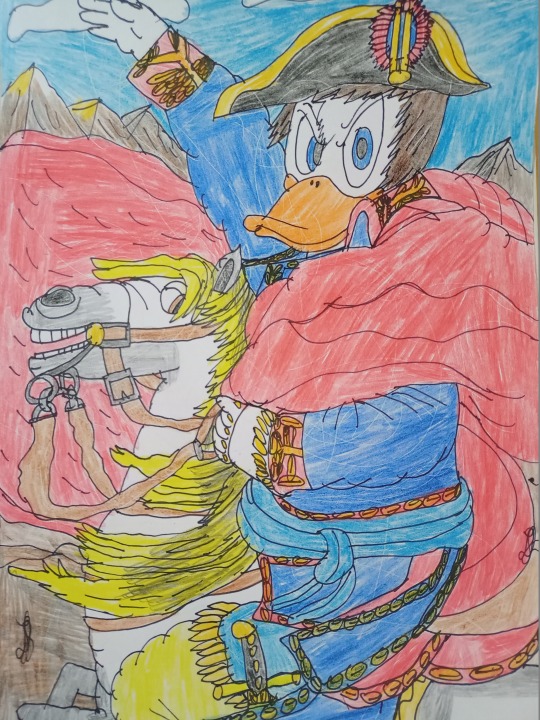
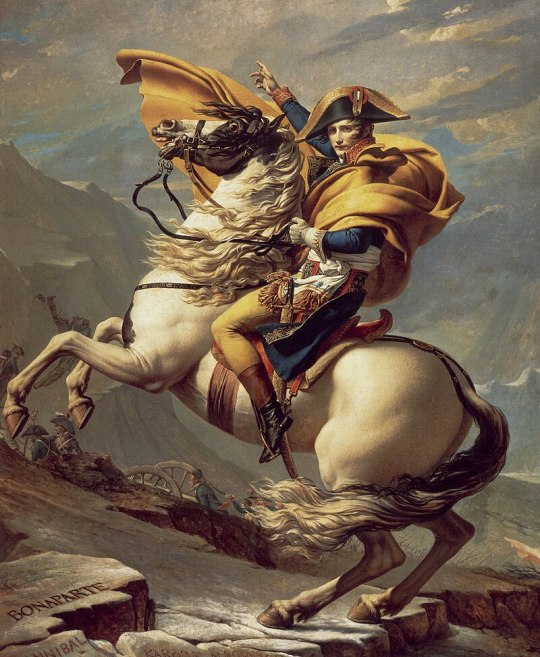
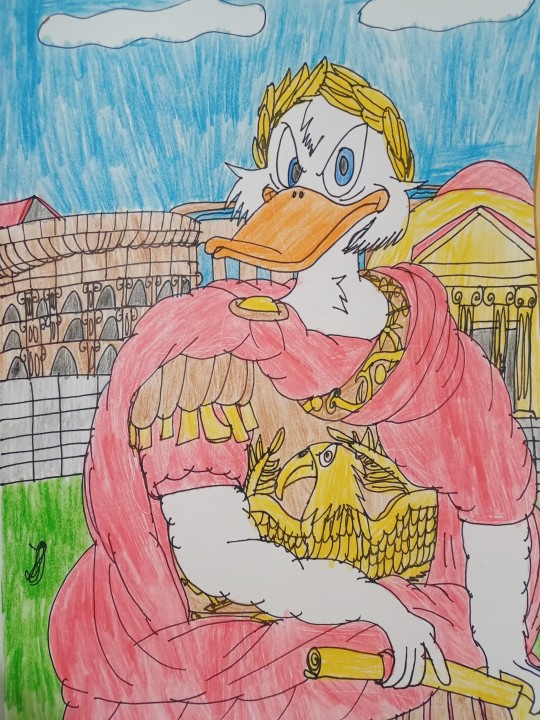
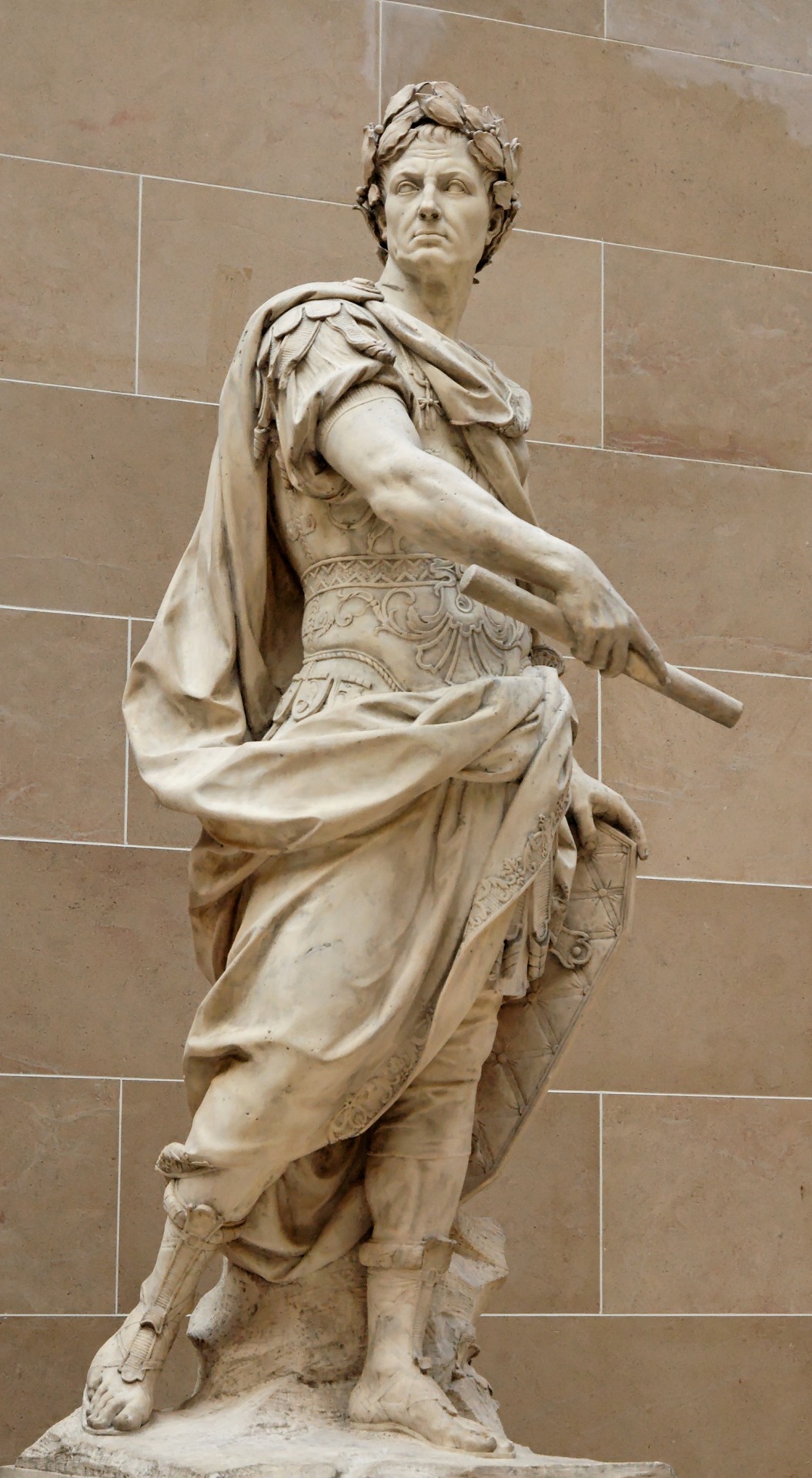
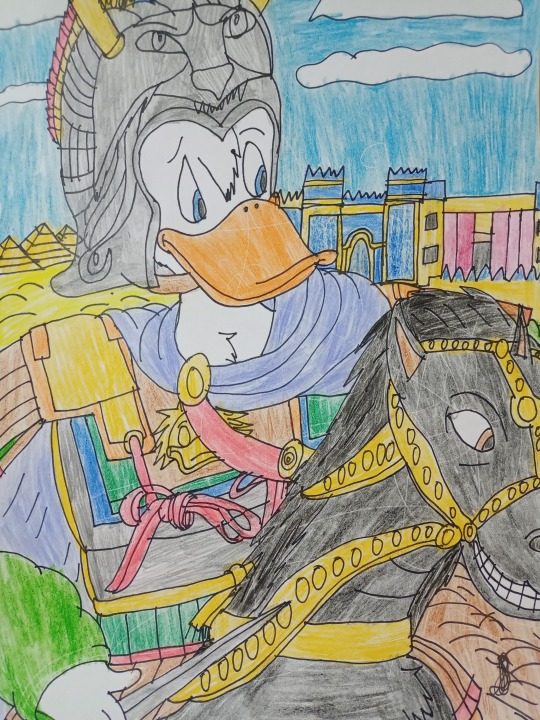
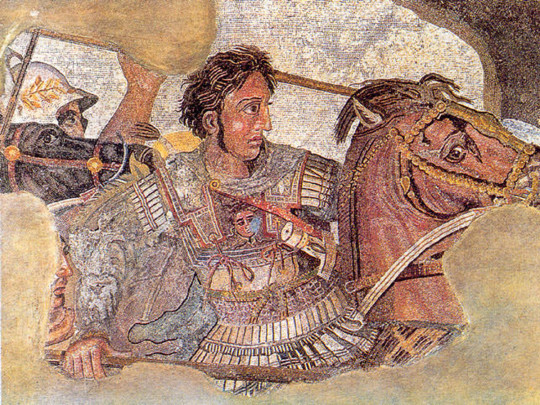
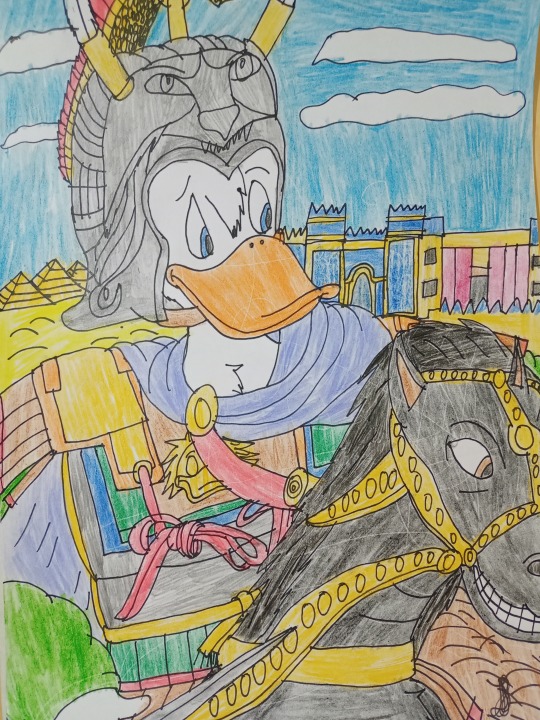
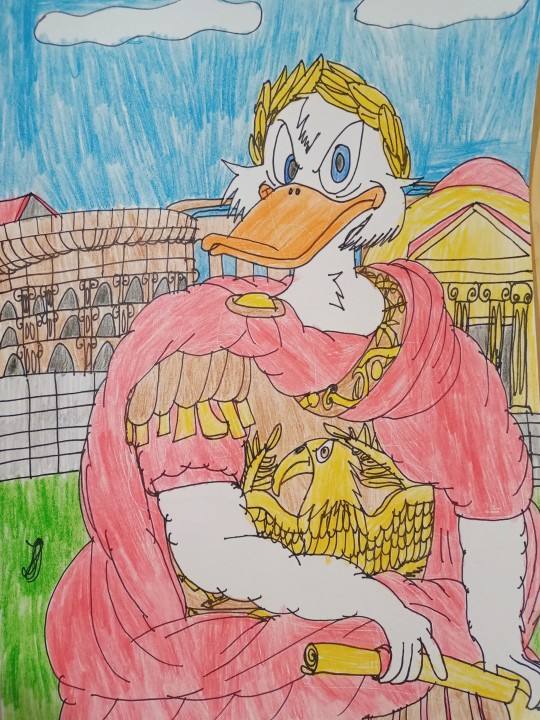
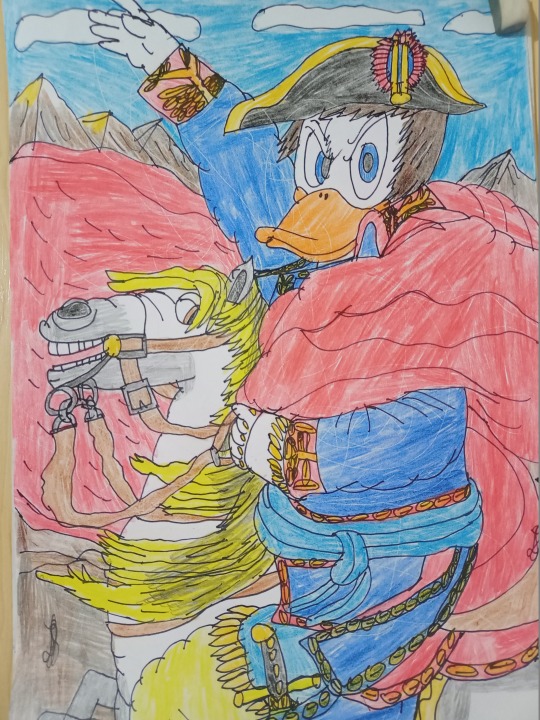
Donald Duck as Napoleon Bonaparte, Scrooge McDuck as Gaius Julius Caesar and Louie Duck (Quack Pack) as Alexander the Great - Conquerors - Real Ducks in History - History in Duckverse
I've always wanted to do a special project called Duckverse in History and my plan is to draw my favorite characters as redraws from famous works of art as well as famous historical figures. And since history is my favorite science, and my favorite field, I definitely wanted to do something related to it and related to one of my favorite historical characters. Since I don't want to complicate the situation, I will gradually publish a drawing related to that historical figure from time to time. I started this last year for Duckvember only to finish at the end of last month.
The first drawing is a redraw from Jacques Louis David's famous early 19th century artwork depicting Napoleon Bonaparte crossing the Alps in 1800 before the Battle of Marengo. Napoleon Bonaparte was the most famous French military leader, general, consul and emperor who waged war with all of Europe at the time and managed to subjugate it in its entirety except for the Ottoman Empire, Russia and Great Britain. He is from Corsica, but he left a lot for France and proved that France is not worth messing with easily. He also gave many reforms and his Civil Code which spread throughout Europe and brought order in France after the French Revolution. Napoleon's nature is very similar to Donald Duck and I drew Donald as Napoleon since he was created for that role and I drew him riding his horse Marengo in my own style, but in a realistic way and that Donald has five fingers.
The second drawing is a redraw of a statue made by Nicolas Coustou at the end of the 17th century for the decoration of Versailles, which depicts the greatest Roman, Gaius Julius Caesar. Although he was not an emperor, certainly many presented him, but he was a dictator, consul, general, writer, historian, engineer, constructor, and a great military leader who changed the Roman Republic into an almost Roman Empire. His fights against the Gauls, as well as the conflict with Pompey and his love with Cleopatra, are known, but he also changed a lot in Rome and was extremely rich. And he lived during the first century BC. That's why I drew Scrooge McDuck as Gaius Julius Caesar since Scrooge is a great leader and he also strived for fame and fortune and to be remembered in the future and he plays the role of the best Roman. Behind it are the Colosseum (built a century after him), the aqueduct (then irrigation) and the Pantheon (built two centuries after him), as well as a Roman temple that symbolizes Rome at that time, as well as the roads themselves. In addition, Topolino (Italian comics) are showed Scrooge as Caesar two or three times so that's where my inspiration came from.
The third drawing shows Louie Duck (the Quack Pack version, not the Ducktales reboot) shows Alexander the Great, another brilliant conqueror from the fourth century BC and I drew it as a redraw from the mosaic of Alexander the Great from the battle of Issus in which he confronts the Persian king Darius III from Pompeii, probably from the first century BC. Alexander the Great was the son of Philip II and the king of Macedonia who united Greece and fought against Persia and managed to conquer an entire empire in his twenties. He traveled through the Persian Empire and reached India and wanted to continue, but his soldiers did not want to continue, so he returned to Babylon, his new capital. He certainly changed the world at that time and introduced a new culture, called Hellenism, as a combination of ancient Greek culture and the culture of the Ancient East and ancient India. I drew Louie as Alexander because as a young man he is a great adventurer and rides his black horse Bucephalus and is eager for extremes, yet unlike Alexander, Louie shows a bit of his shyness, but is still brave enough to take on new challenges. I also added a helmet as worn by Alexander III in his time. Behind Louie are the pyramids from Egypt, the Ishtar Gate from Babylon and the imperial palace from Persepolis where the Persian rulers lived and it actually shows the lands that Alexander the Great conquered.
I certainly hope you like these drawings and these ideas and that these characters have such historical roles. Of course, Duckverse in history I combine mostly everything related to Duckverse (Donald Duck comics, OG Ducktales, Three Caballeros, Darkwing Duck and Quack Pack) and it's mostly my version and my idea. By all means if you like this and support these ideas, feel free to like and reblog this, but please don't use these same ideas without mentioning me and without my permission. Thank you!
#my fanarts#traditional art#artists on tumblr#donald duck#history#duckverse#ducktales#napoleon bonaparte#gaius julius caesar#alexander the great#scrooge mcduck#louie duck#quack pack#disney ducks#duckverse in history#disney duck comics#rome#france#topolino#greece#disney duckverse#quack pack au#art#my redraws#the conquerors#my fanart#comics#cartoons#my style#julius ceaser
37 notes
·
View notes